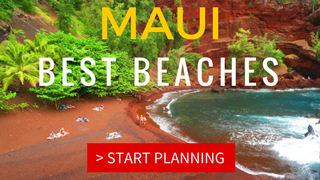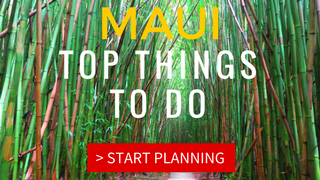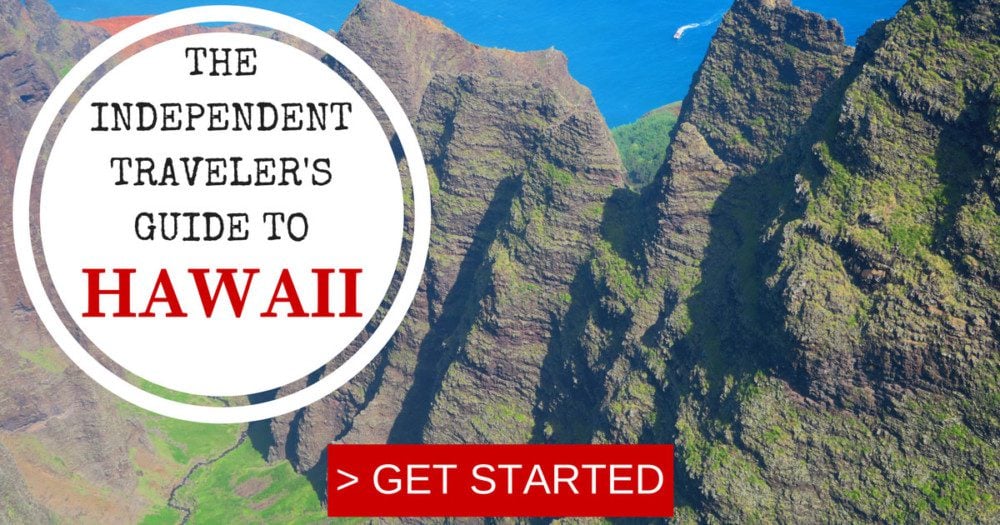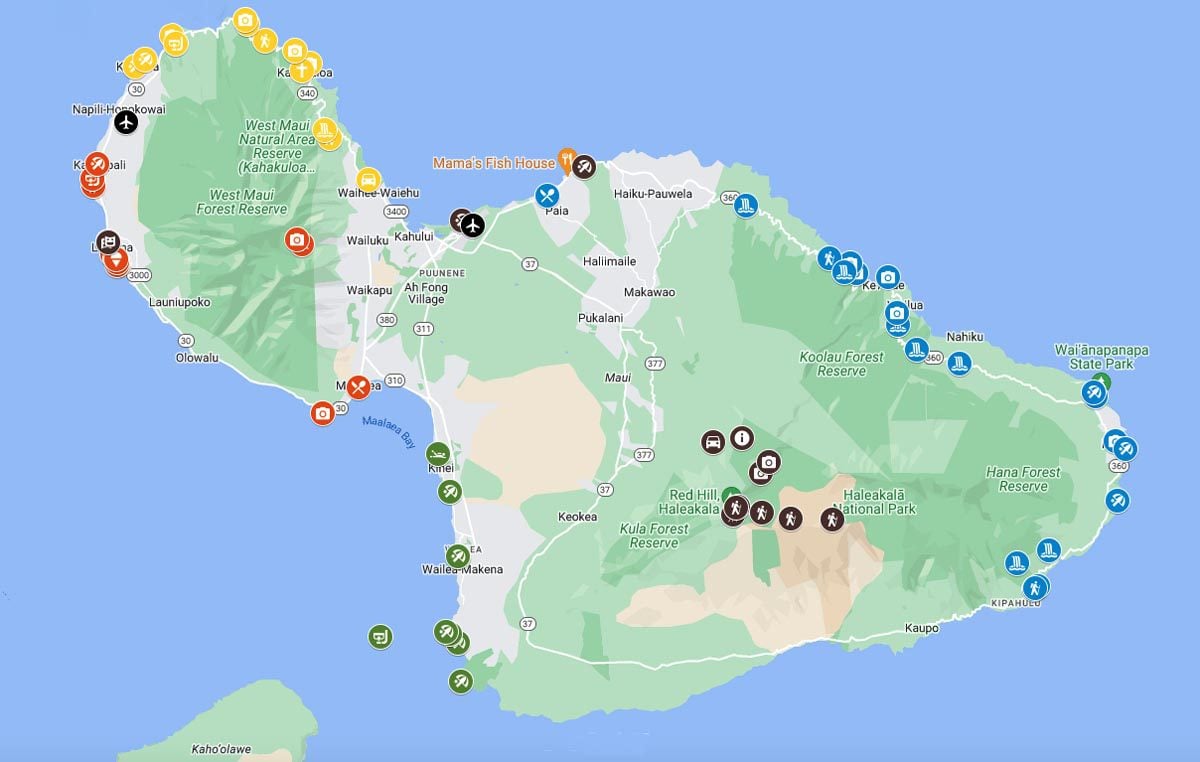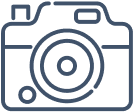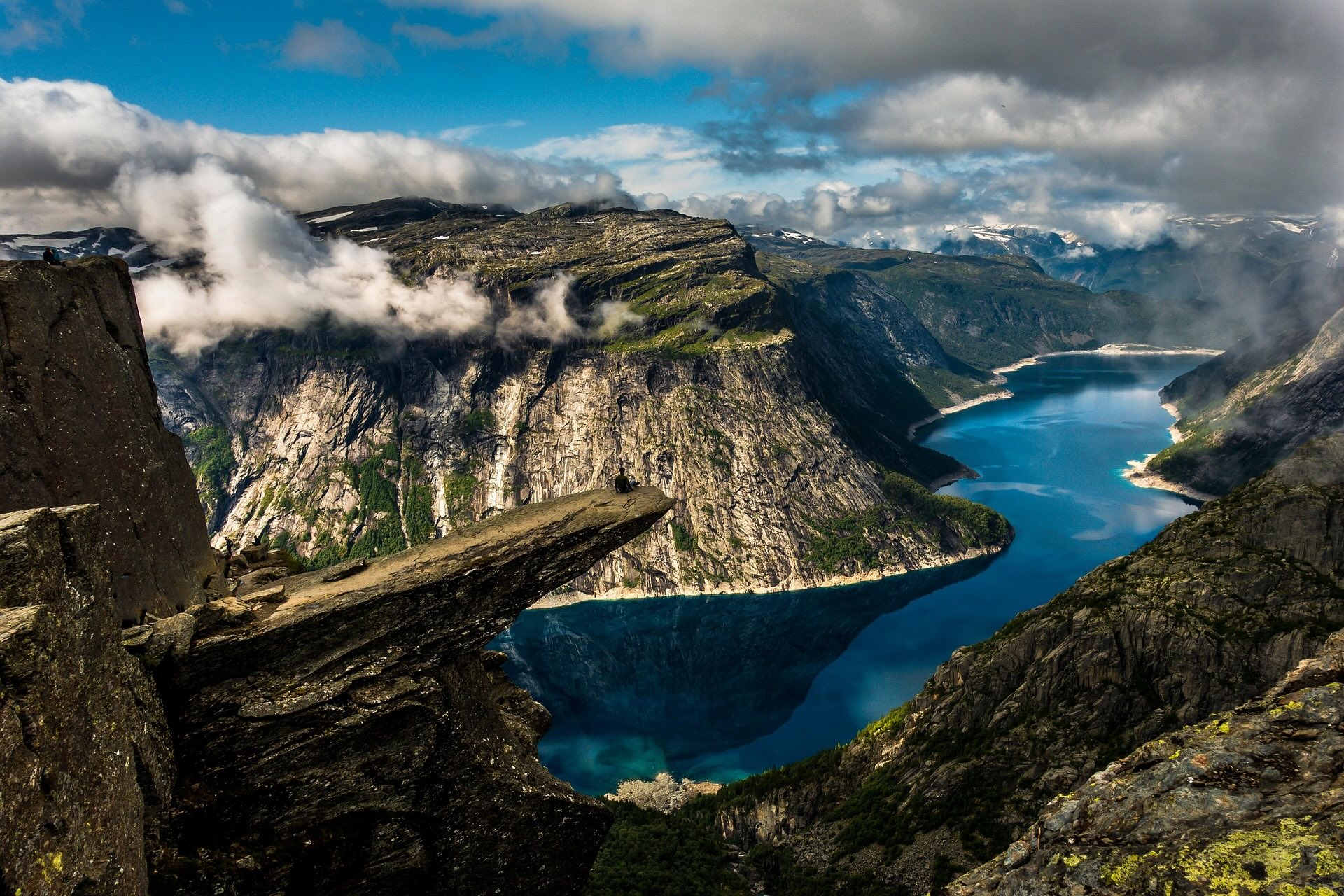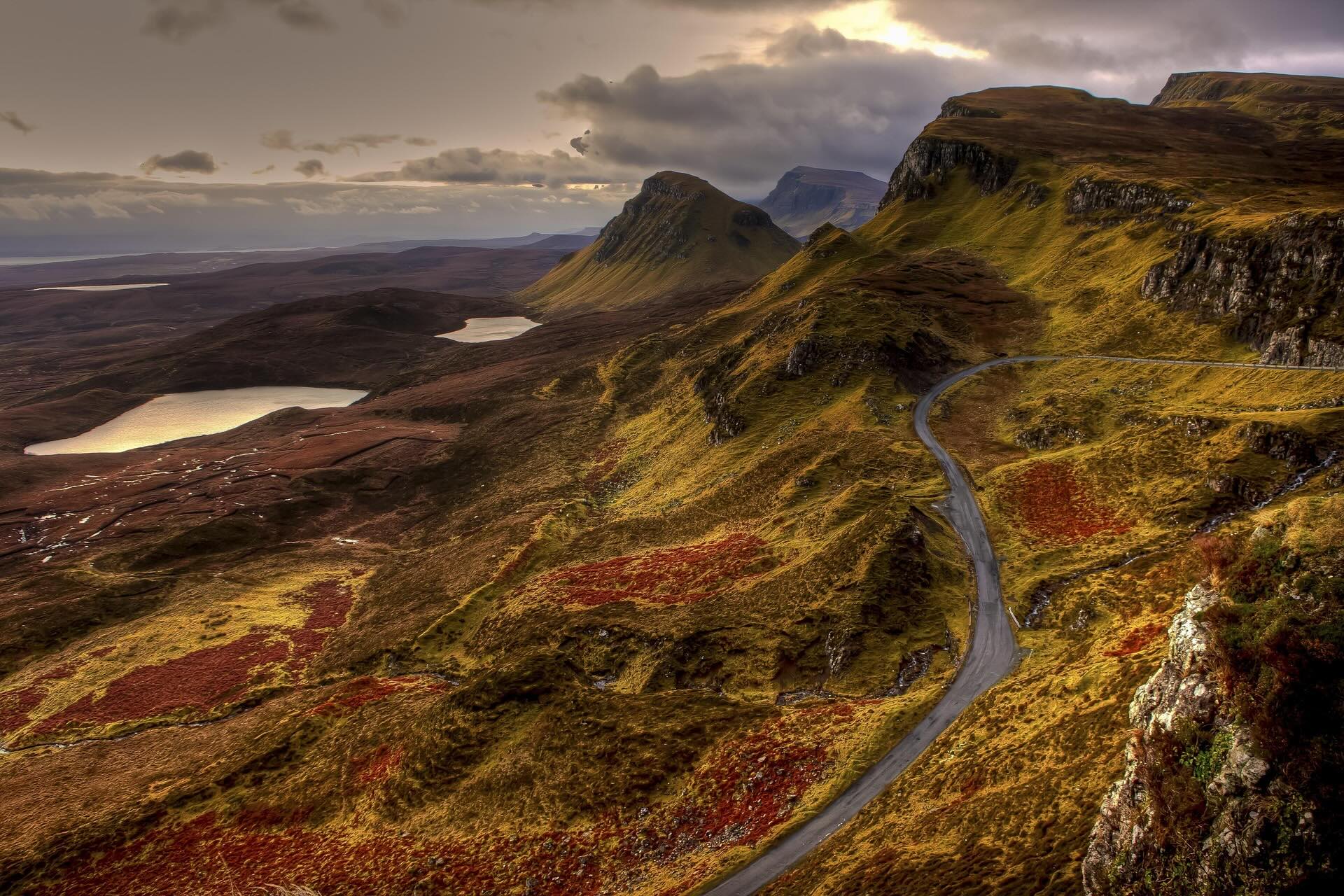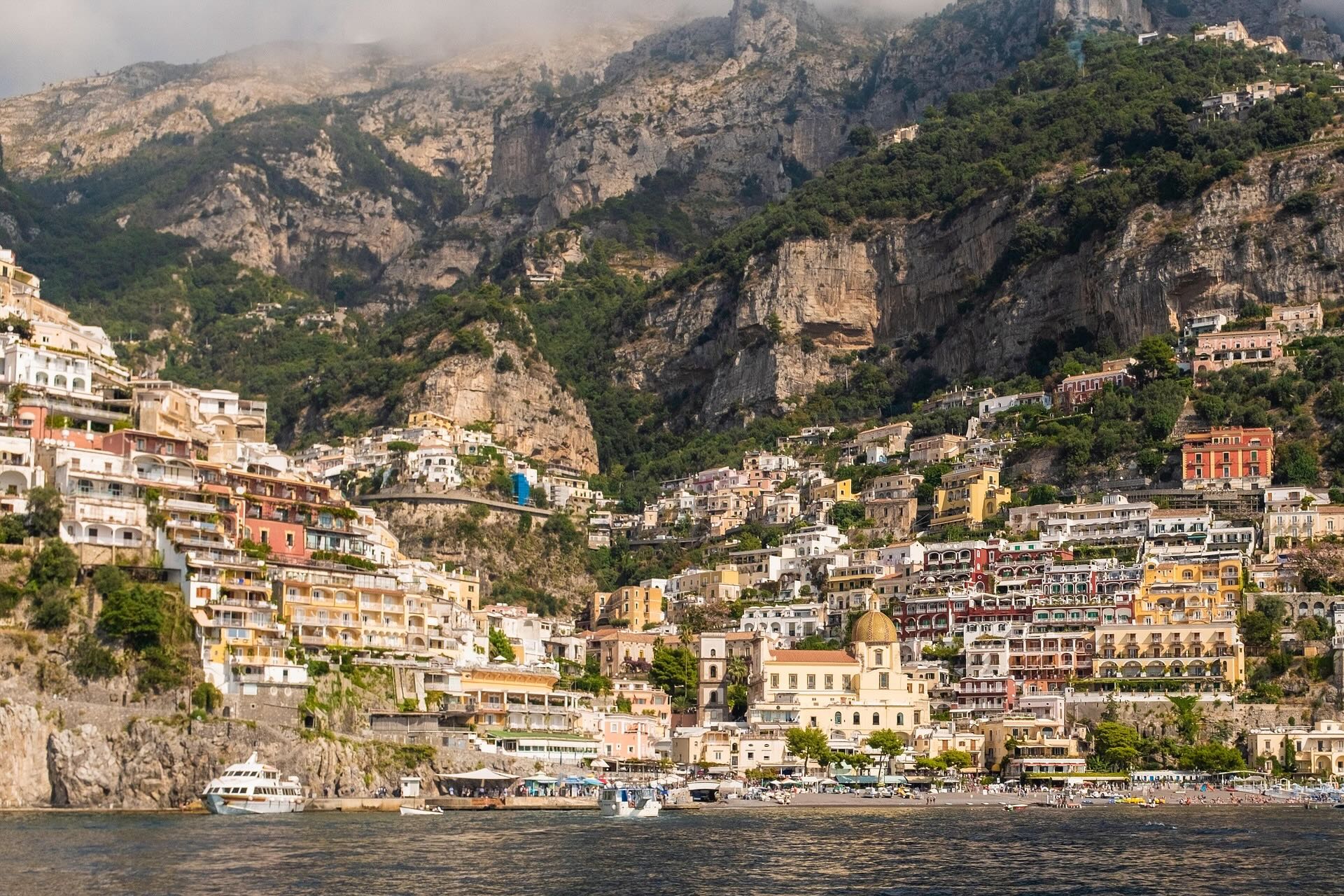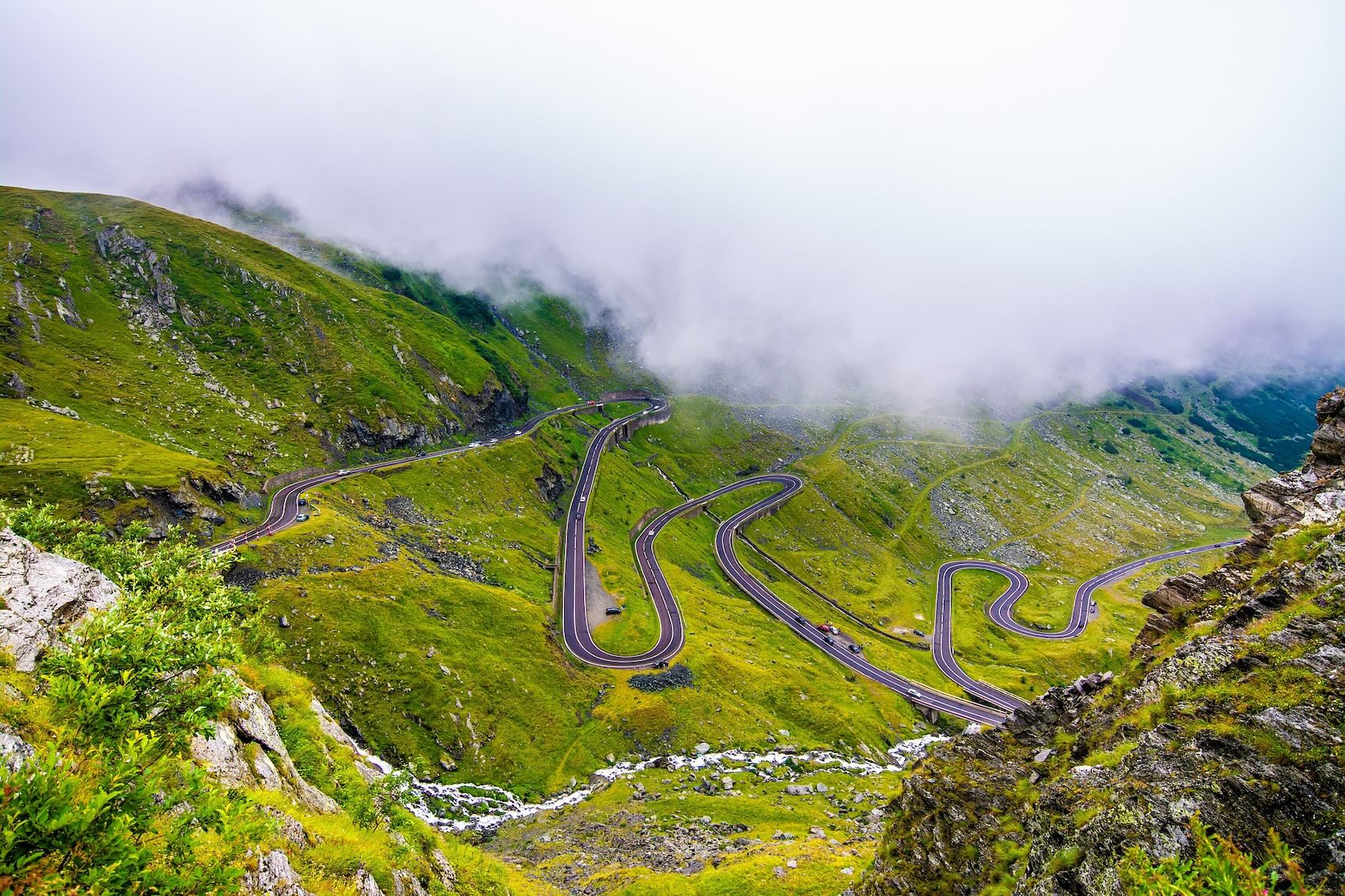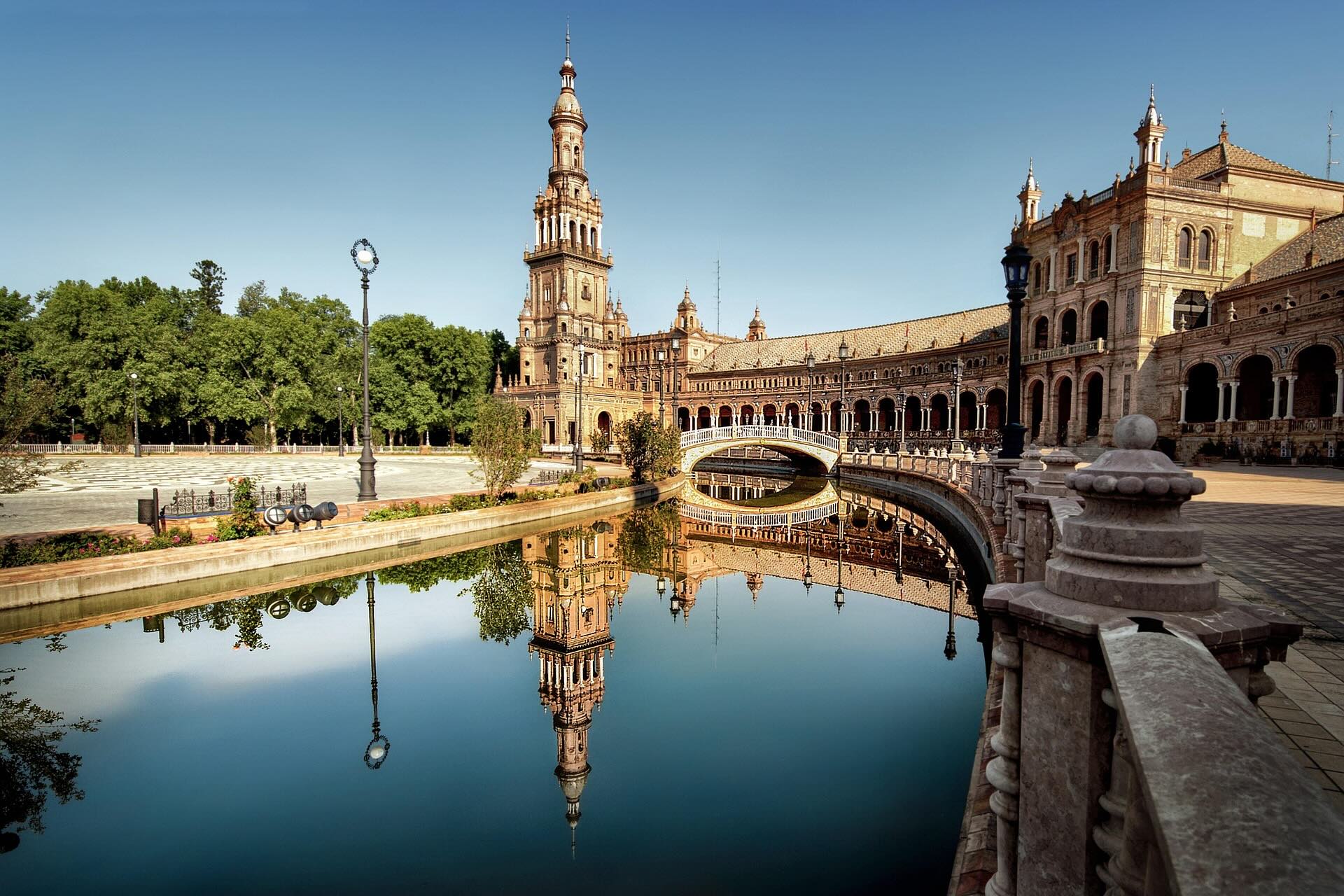5 Days In Maui itinerary
Perhaps the most popular of the Hawaiian Islands, the “Valley Isle” has something for every visitor. Created by the rendezvous of two distinct volcanoes, this might explain Maui’s split personality between east and west. These contrasts, ranging from the Martian-like to the super tropical, have the making of an exciting visit for those willing to burn a few calories. This Maui itinerary deep dives into the best spots in Maui, maximizing your day while leaving plenty of time to relax and unwind at the beach!
I spent a full week in Maui while touring the main Hawaiian Islands. It’s important to note that Maui’s tour operators offer many paid activities, as you might expect from an over-visited island. In this Maui itinerary, we’ll stick to basics and mostly concentrate on activities that you can do independently.
I’ll also stress that if you have an image of a tropical paradise that you’ll enjoy by yourself – think again! Maui is very developed, perhaps too developed.
This Maui itinerary covers five days of activity on the island:
- Day 1: Essential Maui Tips, Scenic Road to Hana [This Page]
- Day 2: Iao Valley, Lahaina & Kaanapali Coast Beaches
- Day 3: Haleakala Crater & Luau Show
- Day 4: Molokini Crater & South Coast Beaches
- Day 5: Kahekili Highway Scenic Drive
Looking for a Quick Read?
Visiting other Hawaiian islands? Sample itineraries, guides to the best beaches, and lots more are waiting for you in the Hawaii Travel Guide collection. Aloha!
Why Visit Maui?
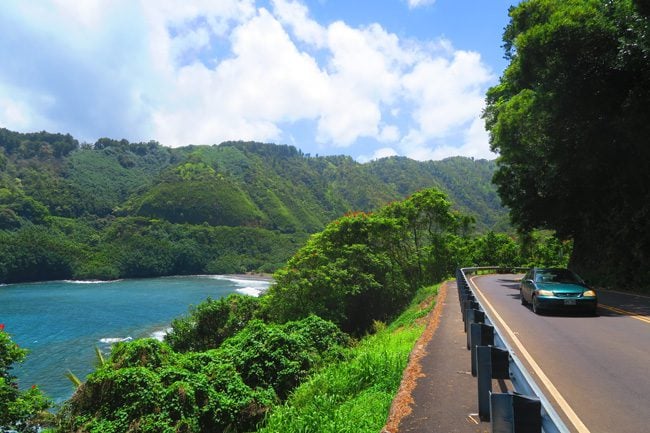
From the epic Hana Highway to the lesser-known Kahekili Highway, Maui’s coastal roads beckon you to hit the road and taste freedom.
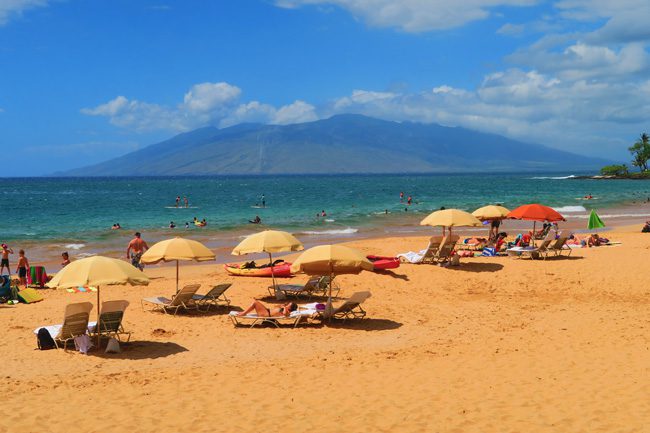
Whether its red, black, or golden sand, though Maui’s endless beaches are popular year-round, there’s always a lonely spot waiting to be discovered.
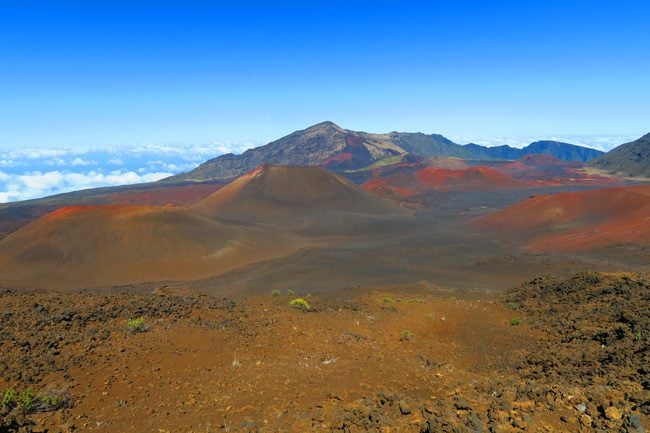
Mars is just a short drive from Maui’s beaches. That’s right, visit Haleakala National Park and return with stories from another planet.
Maui Itinerary Map
This companion map contains all the places mentioned in this itinerary for spending up to five days in Maui. Click on the image to open it in Google Maps.
Maui Travel Tips
This section of the Maui itinerary covers essential travel tips for planning a trip to Maui. Don’t forget to review the Hawaii planning tips guide, where you’ll find general advice on visiting the Hawaiian Islands.
When is the Best Time to Visit Maui
Maui is a year-round destination, busy with tourists throughout the year. The island is geared towards large-scale tourism and boasts several large resorts catering to couples and families with children. As with a visit to Kauai, weather and peak tourist seasons will affect your visit to Maui.
Maui’s Weather
Maui’s winters usually run from November/December to March. During this period, the island gets a lot of rain. This could spoil a visit to the traditionally wetter parts of the island, such as Hana. From April to September, the drier period takes over. The trade winds consistently blow throughout the year and are stronger during this period, providing a breeze and blowing away the moist air. Maui is hot and dry during the North American summer months, even in tropical Hana. During the shoulder seasons – March/April and October – you can expect comfortable weather with the occasional shower or rainy day.
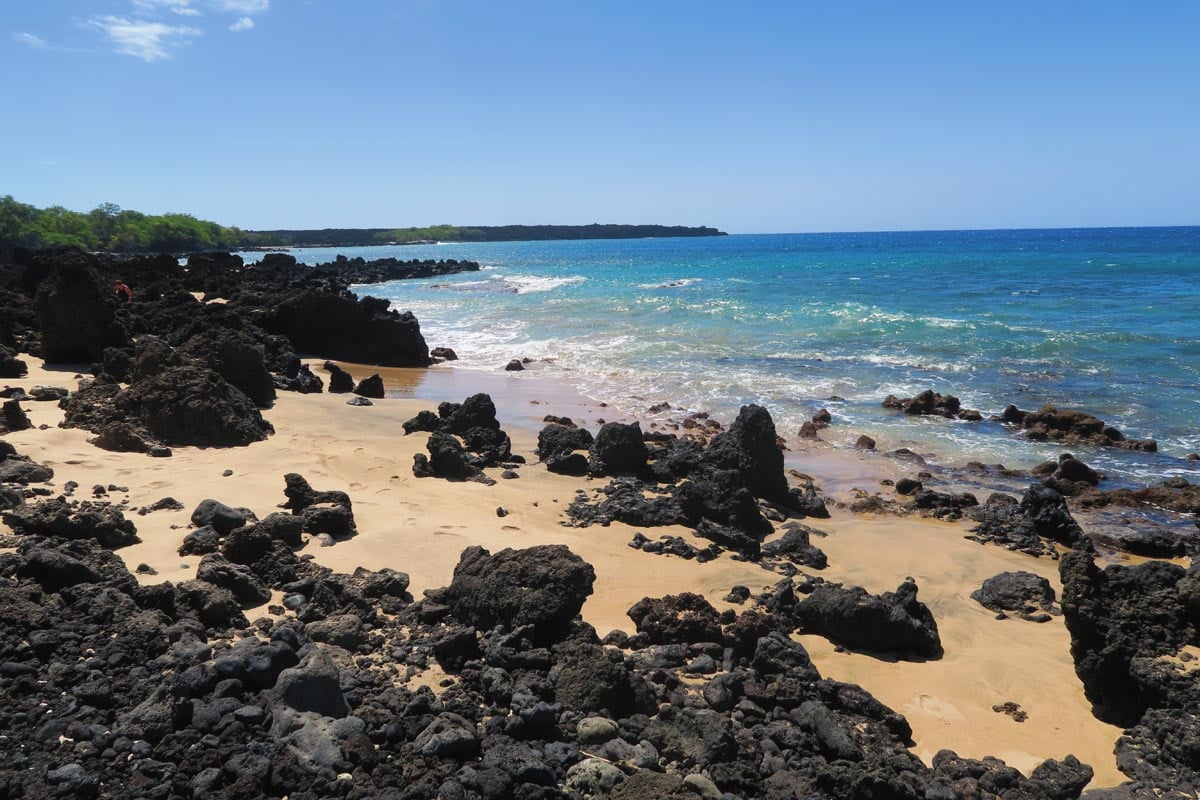
North Maui vs. South Maui
Maui’s leeward and windward coasts often experience entirely different weather. Maui’s north coast (both on East and West Maui) is windier, more tropical, and wet. In contrast, Maui’s south coast (especially on East Maui) is sunny, dry, and sometimes looks more like a desert than a tropical paradise. This is why most resorts are on the sunny south coast. So, a quick drive south will usually do the trick if it’s a rainy day on the north shore!
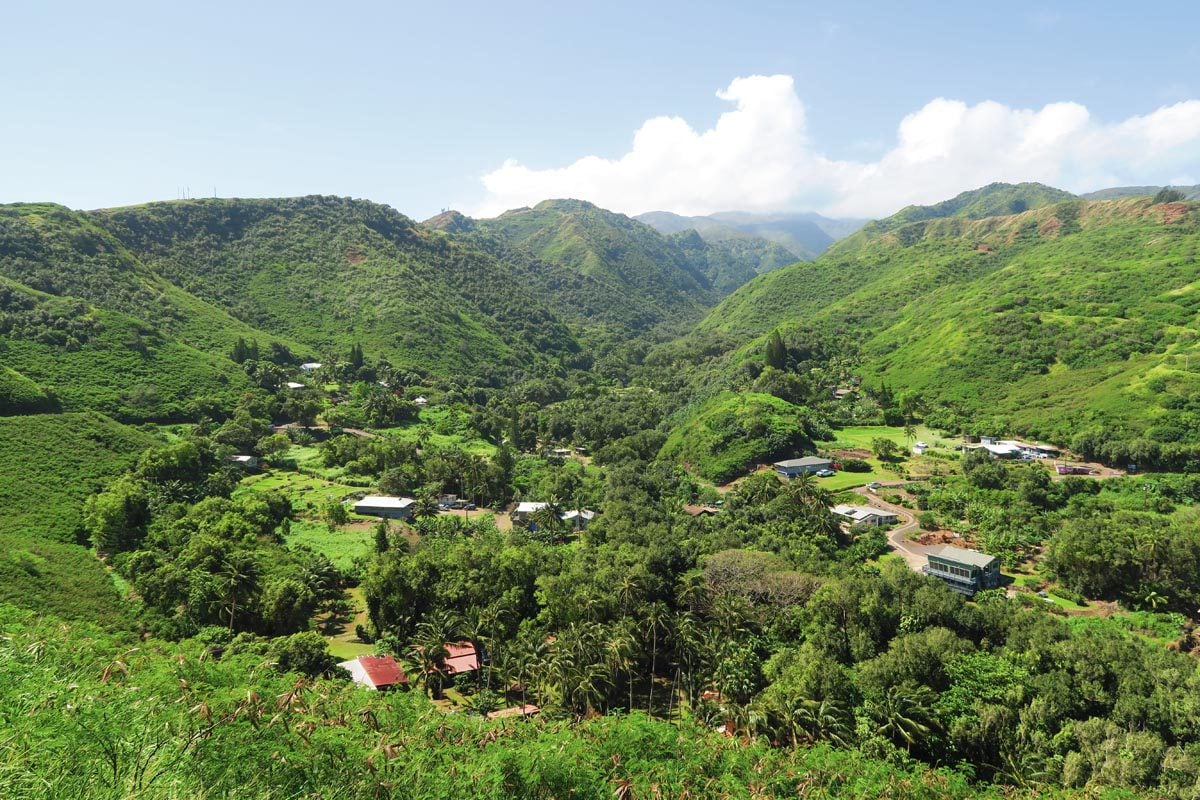
Maui’s peak tourist season
Maui lives off tourism, seriously. The “Valley Isle” is a top destination for U.S. and global holidaymakers, receiving roughly three million annual visitors. Therefore, it will be crowded on the island throughout the year, with a few peak seasons that you might want to avoid. These include Christmas (the weather isn’t amazing anyway unless you’re coming from snow), summer school holidays (July-August), and U.S. national and school holidays (Labor Day, spring break, etc.).
Maui’s Airports
Three airports serve Maui, an important thing to consider when booking your flight to/from Maui and inter-island flights. The main airport is Kahului Airport (OGG), located in central Maui. The secondary airport is Kapalua Airport (JHM), located near Lahaina. There is also a third airport in Hana, but it is less likely you’ll be flying there.
Where to Stay in Maui
Maui is small enough to make sense to base yourself in a single location for your entire stay and explore the island by car. The only exception is the scenic road to Hana, where if you plan to deeply explore the area, it might make sense to spend one night (but it’s not a must).
Another thing to note is the price. Maui’s accommodation prices are among the highest in Hawaii. I am unsure if this is due to a supply/demand issue, but I strongly advise booking well in advance and being mentally prepared to pay a “Maui premium.”
Maui’s Sunny West Coast
Maui’s west coast (the leeward side) gets a ton of sunshine and not much constant rain, especially during the summer months. It‘s also where you’ll find the island’s most extensive stretch of beaches. So it’s no surprise that most of Maui’s large resorts are on this busy island side.
In West Maui, the stretch of coast between Lahaina, Kaanapali, and Kapalua is dotted with high-end resorts, golf courses, and shopping plazas. Over on the south shore of West Maui, the stretch of coast between Kihei and Makena is pretty much the same, though it has pockets of more “down to earth” establishments the further you travel from luxury-laden Wailea.
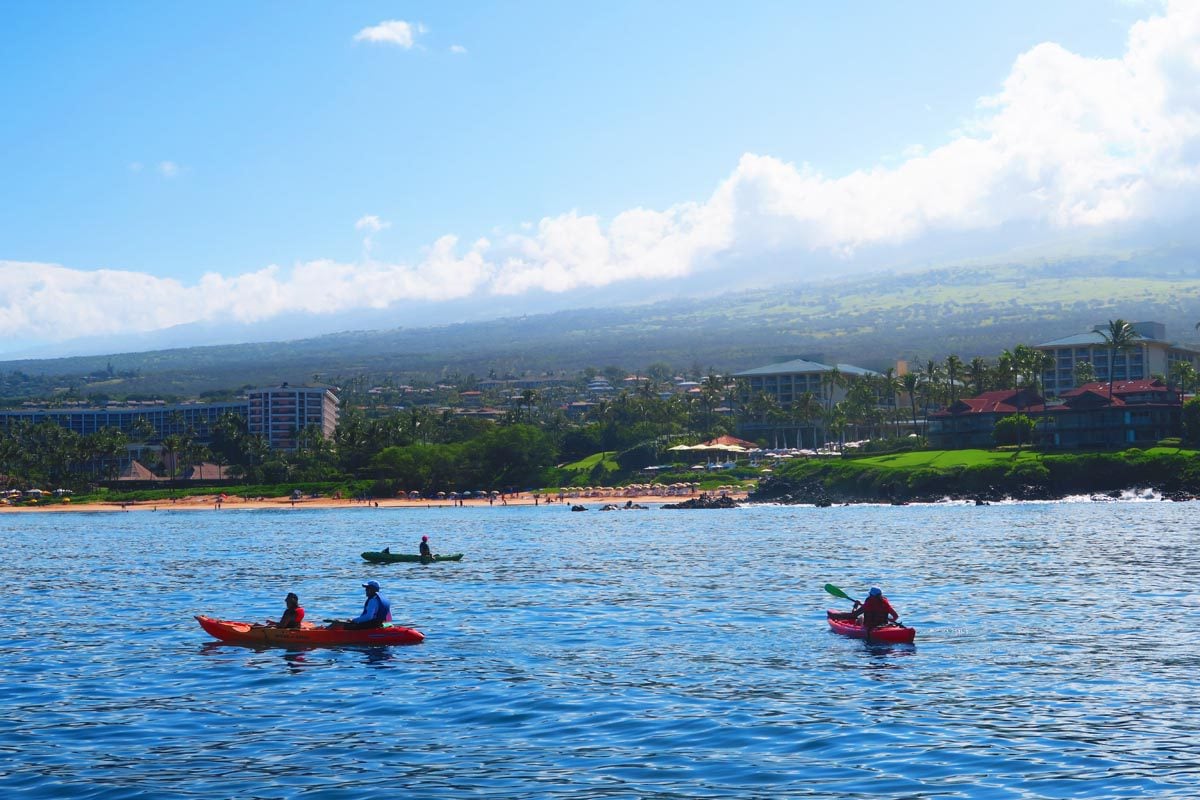
Wailuku, Kahului & Paia
If you want to stay away from the crowds, these three towns might be good options to explore, but you’ll not be the only ones here. Kahului and Wailuku are at the mouth of the gorgeous Iao Valley. They have a mix of historical sites, shopping, and dining, and are often overlooked by tourists. On the other hand, Paia is a coastal town now popular with hipsters, surfers, and vegans. There’s always a good vibe around here, and prime north shore beaches are a stone’s throw away.
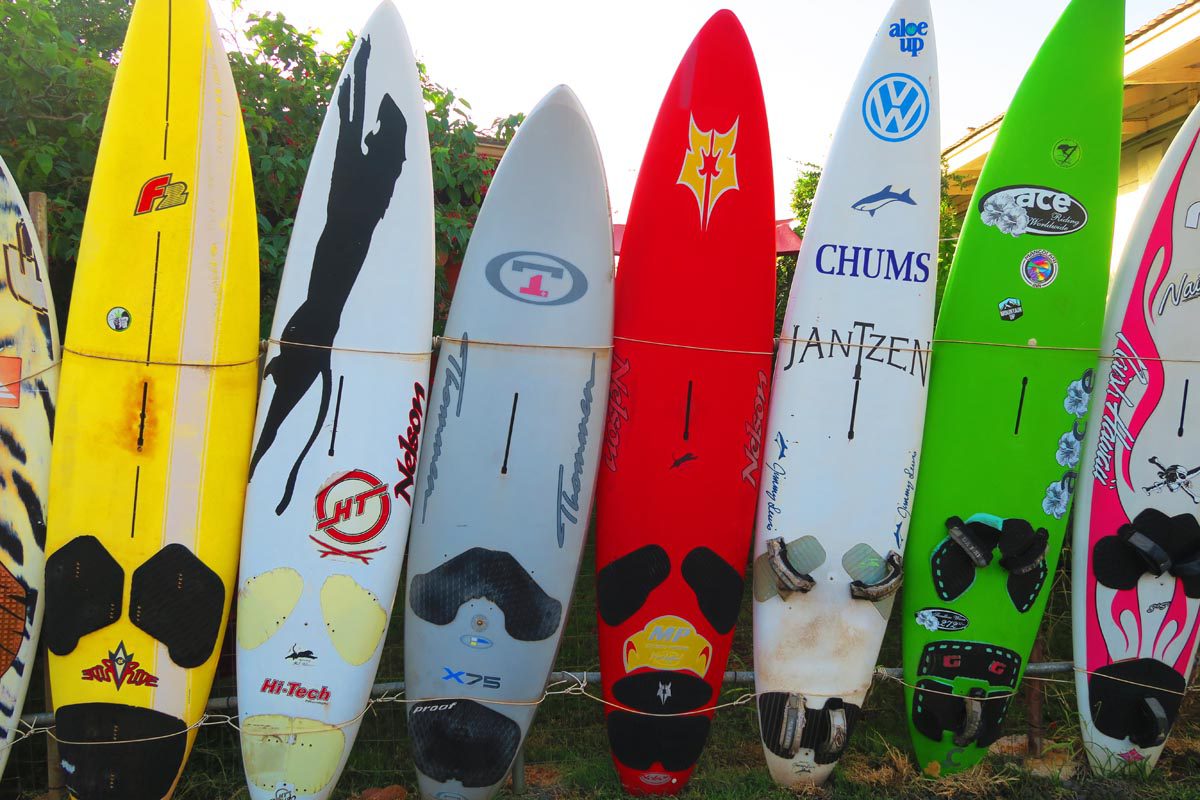
Upcountry Maui & Hana
In recent years, Maui has seen several “country-style” accommodations spring to life in the island’s agricultural interior. There isn’t much selection, but the views are sensational, and the tourist crowds are fewer. Over in the remote village of Hana, visitors often spend a night or two to take it slow on the legendary scenic drive. If you won’t be spending the night here, it simply means getting up early or splitting the scenic drive into two parts (see day one itinerary).
Maui Backpacker Hostels & Camping
Sadly, backpackers will not find too many budget options in Maui, as on nearly all of Hawaii’s islands. Expect to pay more than $50/night for a dorm room bed, and I would strongly advise booking in advance because when space runs out, you’ll either be offered to sleep in a random space at the hostel or simply be turned away. The Howzit Hostels and Aloha Surf Hostel are solid options. If you’re looking more for a happening vibe, check out the Banana Bungalow Hostel.
When it comes to camping, you have two options, which both require making advanced reservations and having proper camping gear (you cannot sleep in the car).
Getting Around Maui
Maui is an island where you can get away with renting a car for targeted sightseeing days and using the bus to get from your accommodation to a specific point for the day. However, I strongly recommend renting a car from the moment you land to the moment you leave (just be sure to rent from the correct airport location, as there are multiple airports in Maui).
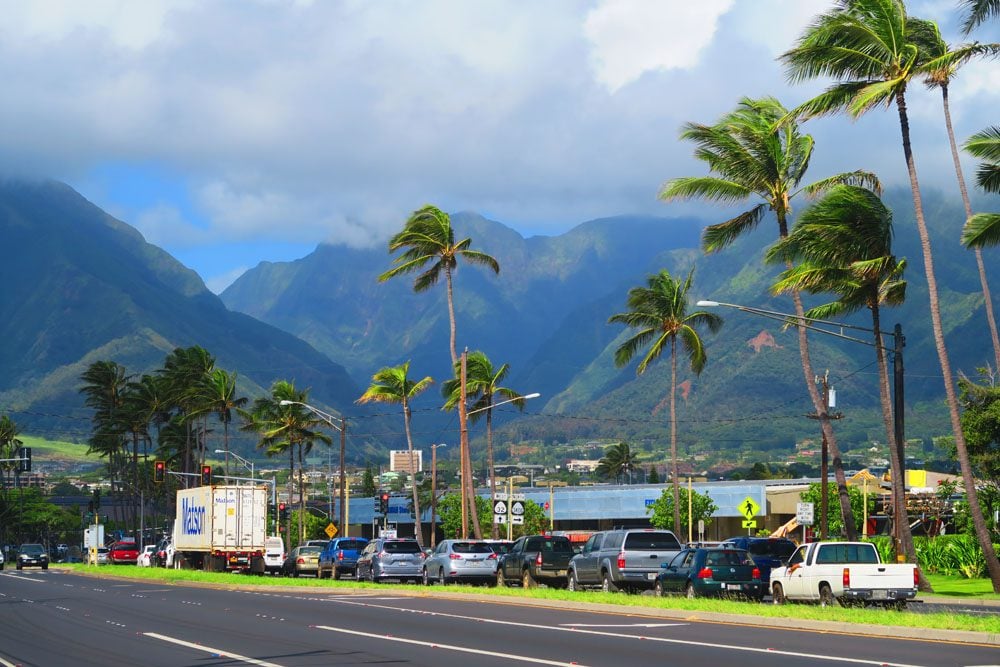
With so many tourists around, competition is stiff, and prices are quite competitive, so you can always find a good deal, especially if renting for more than three days. Hitchhiking is not that common in Maui, and cycling is quite popular, though dangerous, in my opinion, with all those cars and trucks on the busy roads.
Here are a few additional things to consider if you’ll be exploring Maui by car:
-
- There isn’t a need to rent a 4WD in Maui, as you’ll mostly drive on paved roads. The only exception is the 5-mile stretch of an unpaved road on HWY 31 on the south coast, where car rental companies prohibit 2WD access despite this unpaved road being usually just fine during dry periods.
-
- Maui is quite a developed island and gets a lot of visitors. It even has proper stretches of highways in certain sections. Be prepared for traffic slowdowns around the “traffic light hubs” of the south coast resort area (both East and West Maui) and Paia.
-
- Even when traffic is moving, making a left turn against oncoming traffic can take a few minutes of waiting so be patient and don’t take unnecessary risks.
-
- Be very careful and think twice before overtaking on one-lane roads.
-
- Car break-ins are unfortunately quite common in Maui, especially on quieter beaches, the scenic road on the northern coast of West Maui, and all major tourist stops on the road to Hana. Never leave anything visible inside your car or move things into the trunk after parking. It is also common practice to leave the car unlocked and the front windows down. Minimize the risk of a break-in by parking in front of a food stand, home, etc, and inspect the parking area for any broken glass – this is a definite sign to head elsewhere.
-
- Since Hawaii is a ‘no-fault’ state, car rental companies will scare you to death and offer incredibly expensive insurance plans. With the larger companies, you can usually decline this, but with the smaller ones, they often force you to take, at the very least, the cheapest package, which can amount to about $15 per day. American car owners usually have an insurance policy that covers rental cars, but foreigners do not. If you’re traveling from abroad, perhaps your travel insurance can include this type of coverage. In this case, you must show at the counter that you have coverage, so bring a copy of your policy (in English).
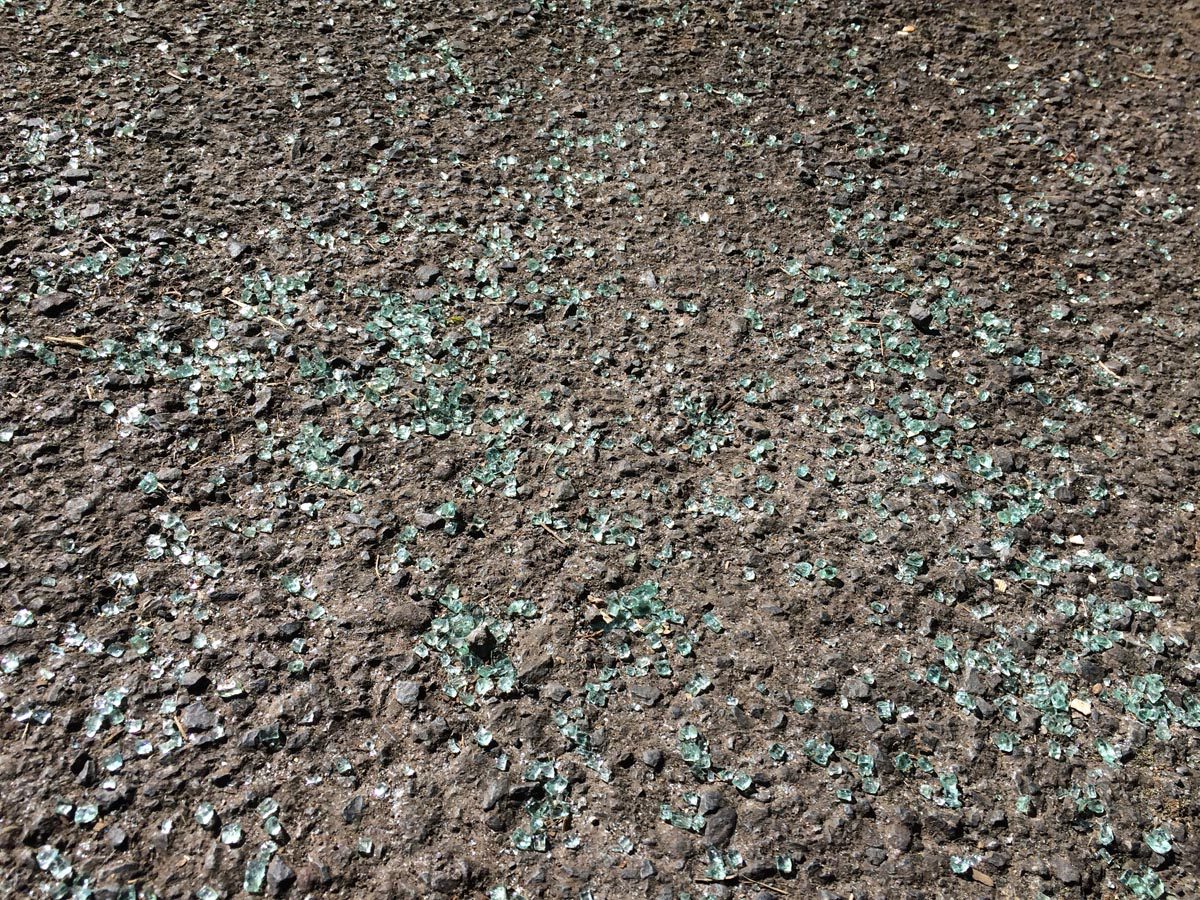
What to Pack for Maui
Together with this Maui itinerary, I recommend planning your trip alongside a copy of the Lonely Planet guide to Maui to have useful information at your fingertips and to better understand Maui’s culture and interesting history. If you’re visiting additional islands in Hawaii, consider purchasing the Lonely Planet Guide to Hawaii.
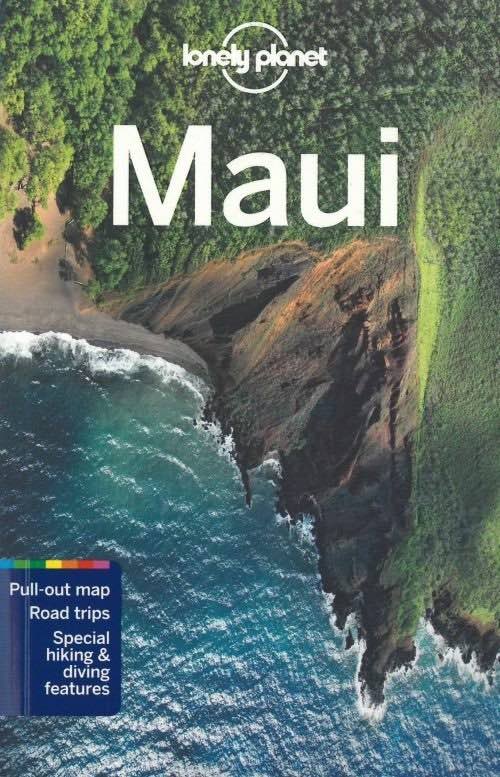
Regarding packing, a visit to Maui mostly revolves around beaches, water sports, scenic drives, and dining. This means packing proper beach gear, snorkeling equipment, underwater cameras, sun protection, and decent-looking summer attire.
There are also a few lovely hikes in Maui, the best of which are in the Haleakala Crater. If you plan to hike in Maui, pack proper shoes, sweat-repelling clothing, walking poles, etc. If you just drive to Haleakala to enjoy the views (and, of course, if you’ll be hiking), be aware that the weather up here is VERY cold, so pack the same clothes as you would for a New York winter, taking a layering approach.
Have a look at this page for more information and recommendations.
- See the “Maui Driving Tips” section for related tips, including car break ins on Maui.
- Maui beaches can be very dangerous in periods of high surf. Avoid swimming in the secluded spots of the north shore of West Maui (see day 5 itinerary), always listen to the lifeguards and, of course, your gut instinct.
- Shark attacks are known to occur in Maui’s beaches, especially off the south coast. There’s not really much you can do but just be aware and ask the locals.
Day 1: The Scenic Road to Hana
We’ll dedicate the first day of this Maui itinerary to the legendary road to Hana, one of the best scenic drives in Hawaii. The town at the end of the line is not the highlight, but the way to get there is. For many visitors, the scenic road to Hana is the highlight of their trip to Maui.
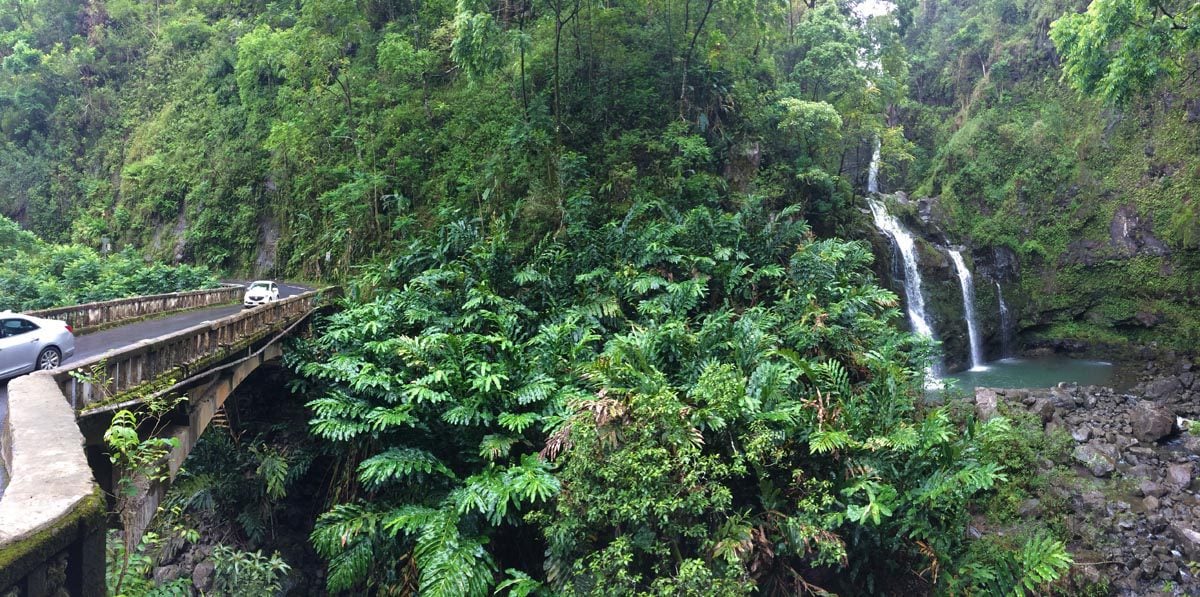
Part of a 16th-century trail that encircled the island, the Hana Highway connects Maui’s most remote settlements with the rest of the island via a twisting road that snakes its way atop stunningly beautiful sea cliffs. It is a slow-going 44-mile (70 km) journey, which crosses 54 one-lane bridges and passes by more waterfalls than homes. As you might imagine, this scenic drive ain’t a secret, but wisely planning your day will help you make the most of this road trip in Maui.
Since the tropical northeast coast of Maui is often plagued by wet weather, I recommend driving to Hana on your first day in Maui (if the weather forecast looks good). That way, you’ll get it out of the way and/or have additional days to return to your favorite spots if you felt a bit rushed. If you won’t be overnighting in Hana and wish to avoid the crowds, I recommend getting an early start, driving straight to the furthest point you wish to get to, and slowly working your way back.
Logistics for the day
Apart from the above insider tips, here are a few more essential tips for driving the scenic road to Hana. Note that you can also book a guided tour and avoid this long drive.
Planning & Timing
Do not try to see everything in one day. If you’re not overnighting in Hana, pick and choose your battles and enjoy this special day. Aim to hit the road by 7 am, if only day-tripping. The furthest site is the bamboo forest on the Kipahulu side of Haleakala National Park, a 2.5-hour drive from Wailuku.
Not all highlights are signposted on the road to Hana, so pre-mark them on a Google Map, download it offline to your phone (cell phone coverage is quite poor), and navigate independently to your selected points of interest.
Check the weather forecast the night before and make adjustments if needed. Remember to take things with a grain of salt when it comes to weather reports on Maui. Unless the forecast calls for heavy and constant rain, it’s a go!
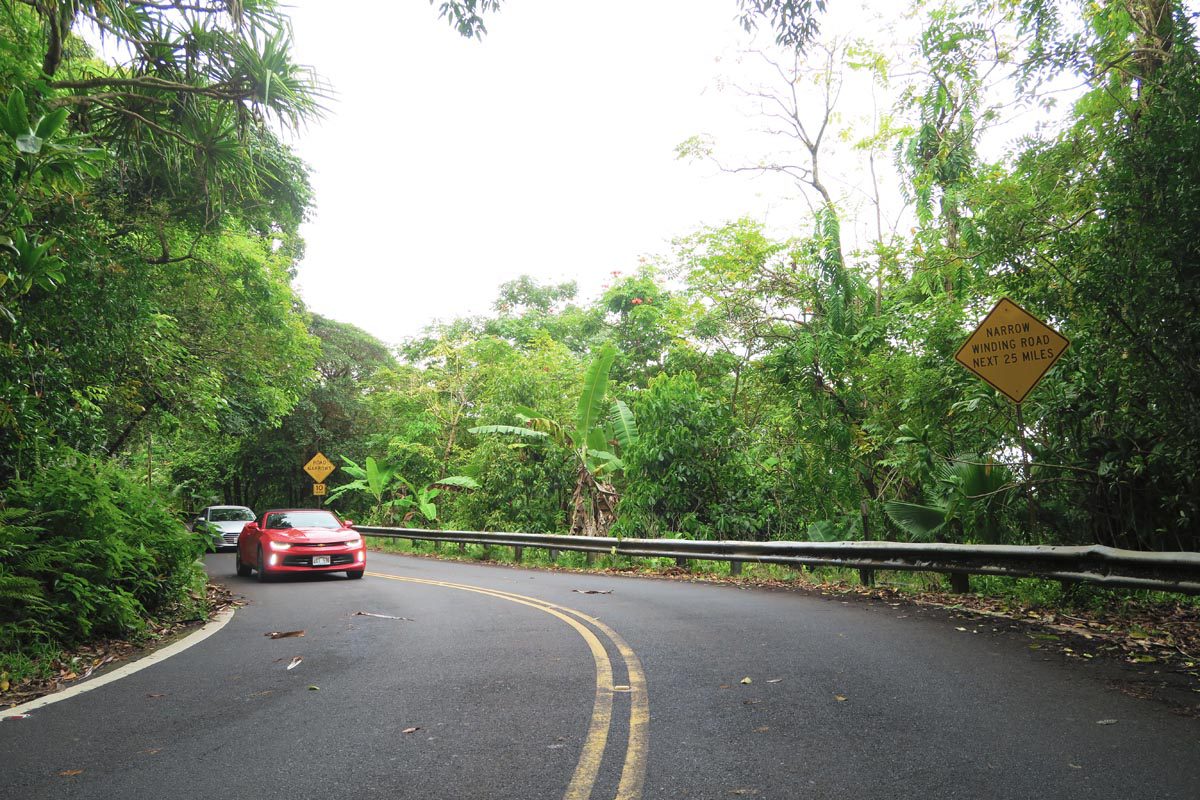
Packing
There are places to buy food and drinks along the way, but I strongly recommend packing lunch, snacks, and plenty of water for the day. Bring beach/swim gear, mosquito repellent, rain gear, and a full change of clothes if you’ll hike.
Safety
Don’t leave anything in your car or trunk! Break-ins, especially around Twin Falls, are very common and will ruin your vacation. It is also wise to leave the doors unlocked, and your front window rolled down. Leave your vehicle in areas less prone to break, such as staffed entrances, next to food stands, etc.
Approach the blind turns cautiously and try to glide slowly into them. Some local drivers, especially overconfident tourists (usually driving rented Mustang convertibles), have no road manners. Lastly, fill your gas tank before passing Paia. I saw a gas station in Hana, but I am unsure if it’s for locals only and whether its pumps are always full.
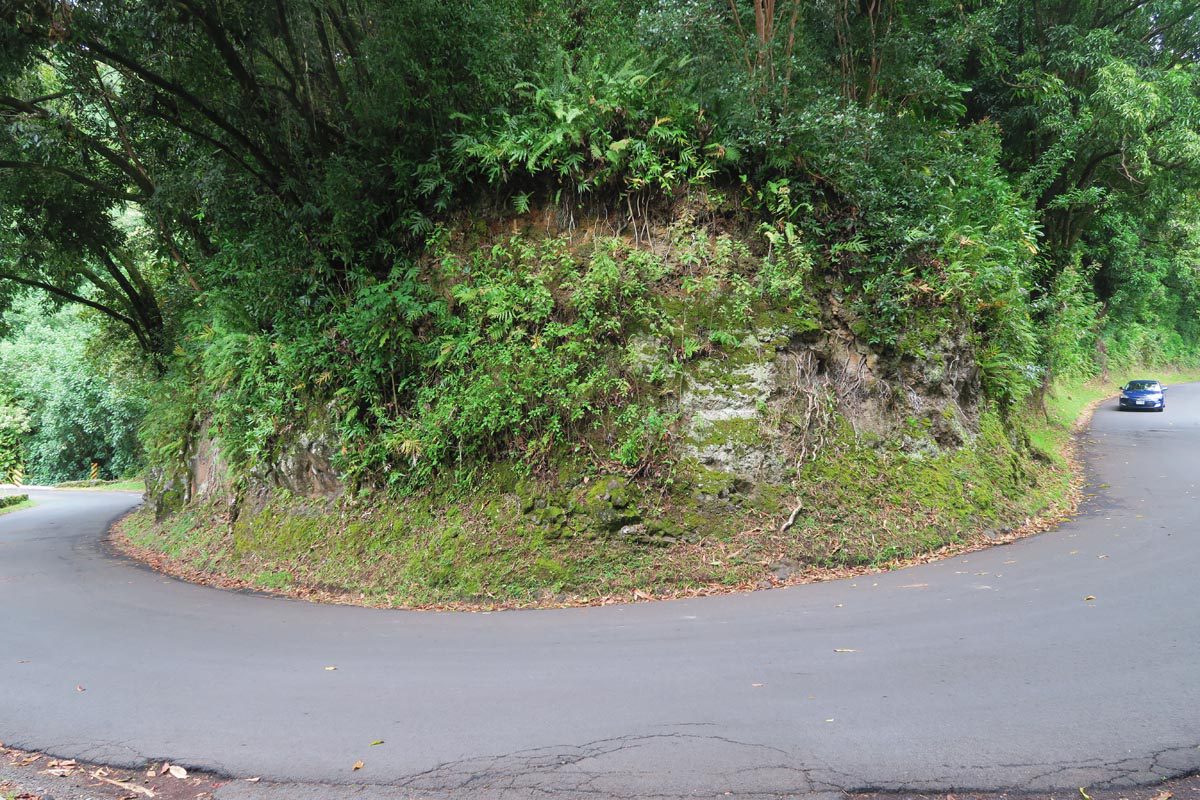
driving etiquette
Some spots might be inviting for a quick photo stop, but if there’s a sign prohibiting stopping, there might be a good reason for it. Be courteous to others, find another place to stop, and walk a little to snap your photos.
Apart from the countless scenic stops along the way, the road is extremely slow-going, especially once you pass Kailua. Speeds are sometimes reduced to 10 mph, and you must stop to give way to oncoming traffic on one-lane bridges. Drive very carefully, patiently, and courteously!
Overnighting
Camping and cabin rentals are available with advanced reservations in Wai’anapanapa State Park. For “proper” accommodations, Hana and its vicinity have plenty of options, though they book fast.
I’ll now list the major highlights on the scenic road to Hana, omitting a few places I visited on two separate occasions that really aren’t worth the time. I’ll start from the Kipahulu side of Haleakala National Park and work my way back to Paia. Keep in mind: there are only so many waterfalls you can see in one day. After a while, they all look the same…
Haleakala National Park – Kipahulu
The 10,000-foot Haleakala Volcano has a split personality. Its western slopes rise to the Martian-like interior of its crater, while its eastern side is tropical and teeming with life. We’ll visit Mars in just a few days, but today, we’ll explore the Kipahulu side of the Haleakala National Park. The two sides are not connected by road and cannot be combined on the same sightseeing day. Therefore, save the entrance fee receipt since we’ll use it when visiting the other side.
Kuloa Point Loop Trail
This easy 0.5-mile loop trail, including stops, takes about 20-30 minutes to complete. The trail leads to the Seven Sacred Pools, a series of natural pools that violently meet the open ocean. The pools’ degree of impressiveness will vary with the amount of water flowing through them and the amount of sun in the sky. In any case, do not be tempted to dip, as flash floods have claimed a few careless lives (swimming is prohibited).
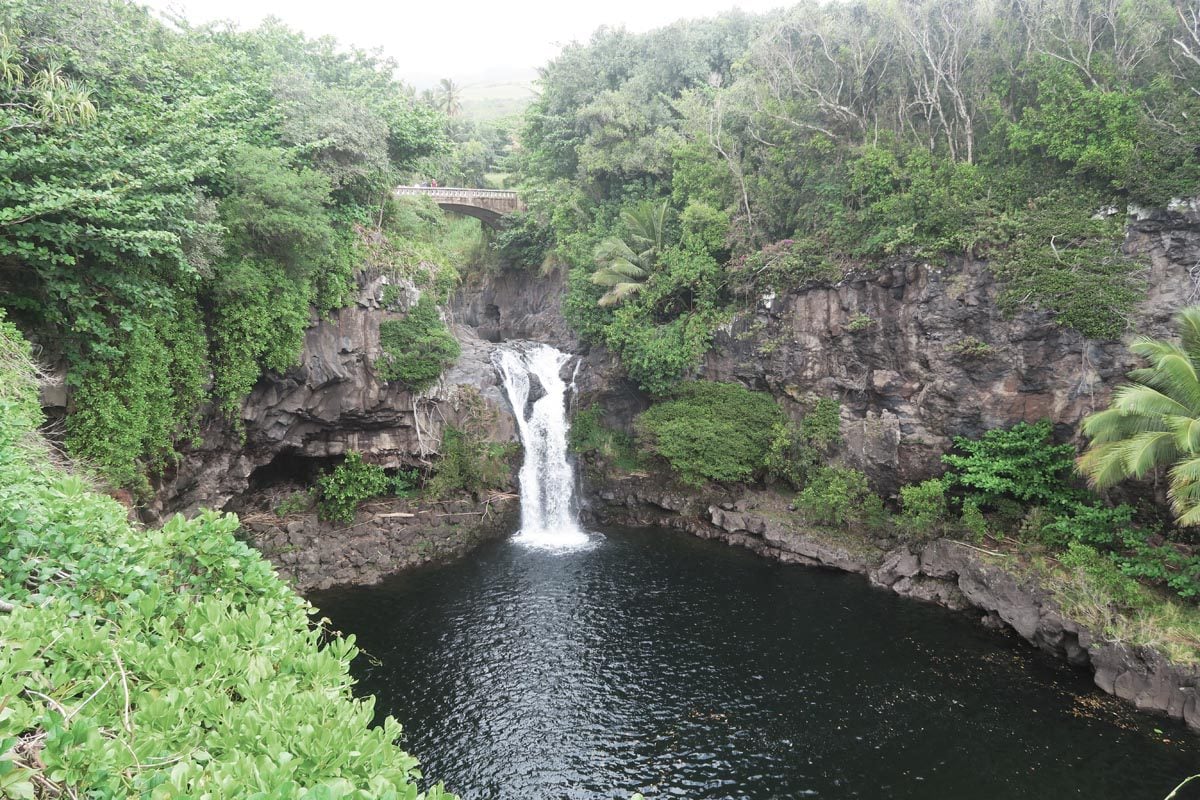
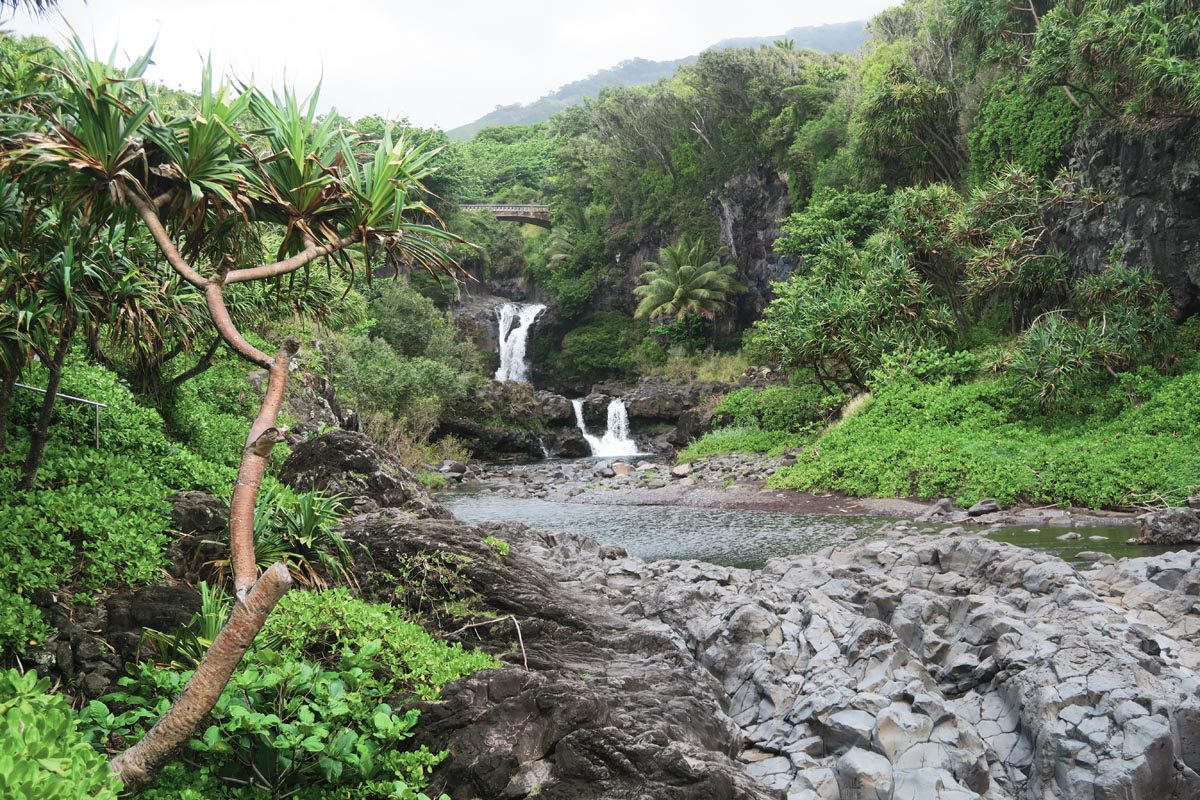
Pipiwai Trail
The Pipiwai Trail is the reason for driving the extra miles to this section of Haleakala National Park. It’s one of the best hikes in Hawaii, offering natural scenery that’s hard to come across on other Hawaiian islands. The trail begins with a gentle ascent through the rainforest using a series of steps and the slippery roots of the trees. You eventually reach a very impressive centuries-old banyan tree before the real fun begins.
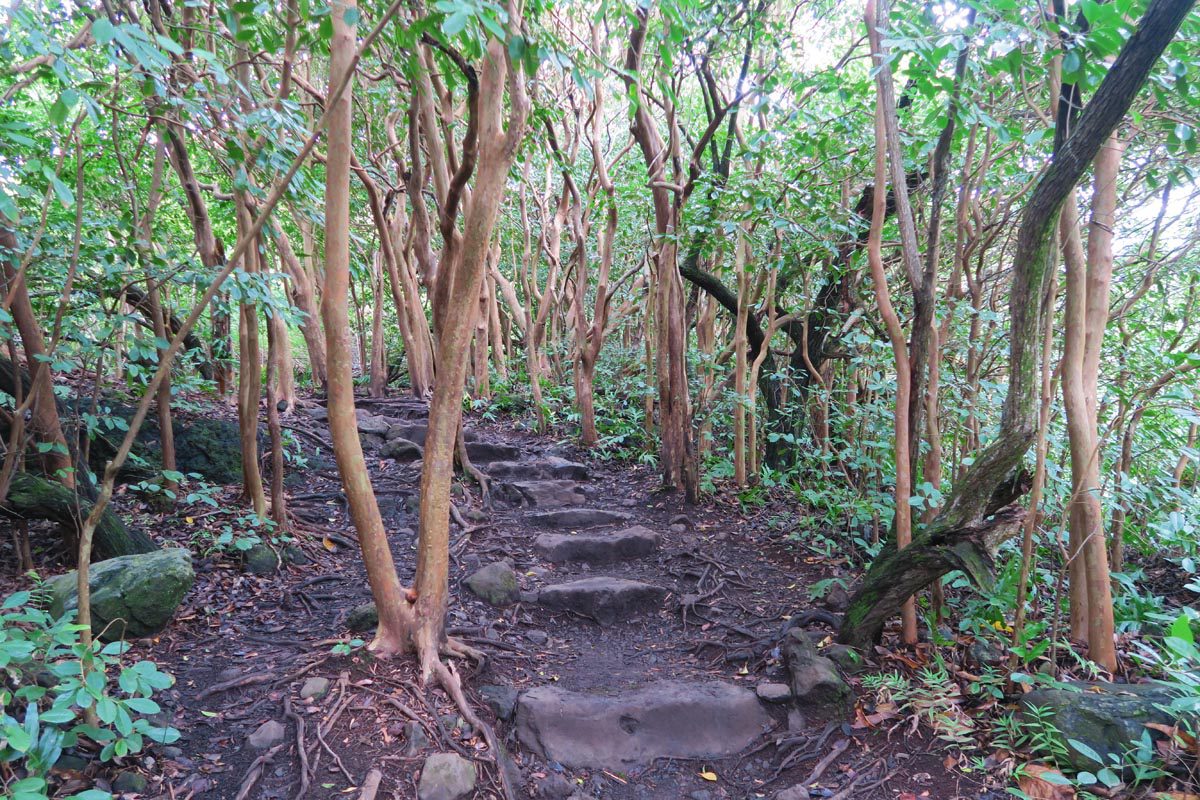
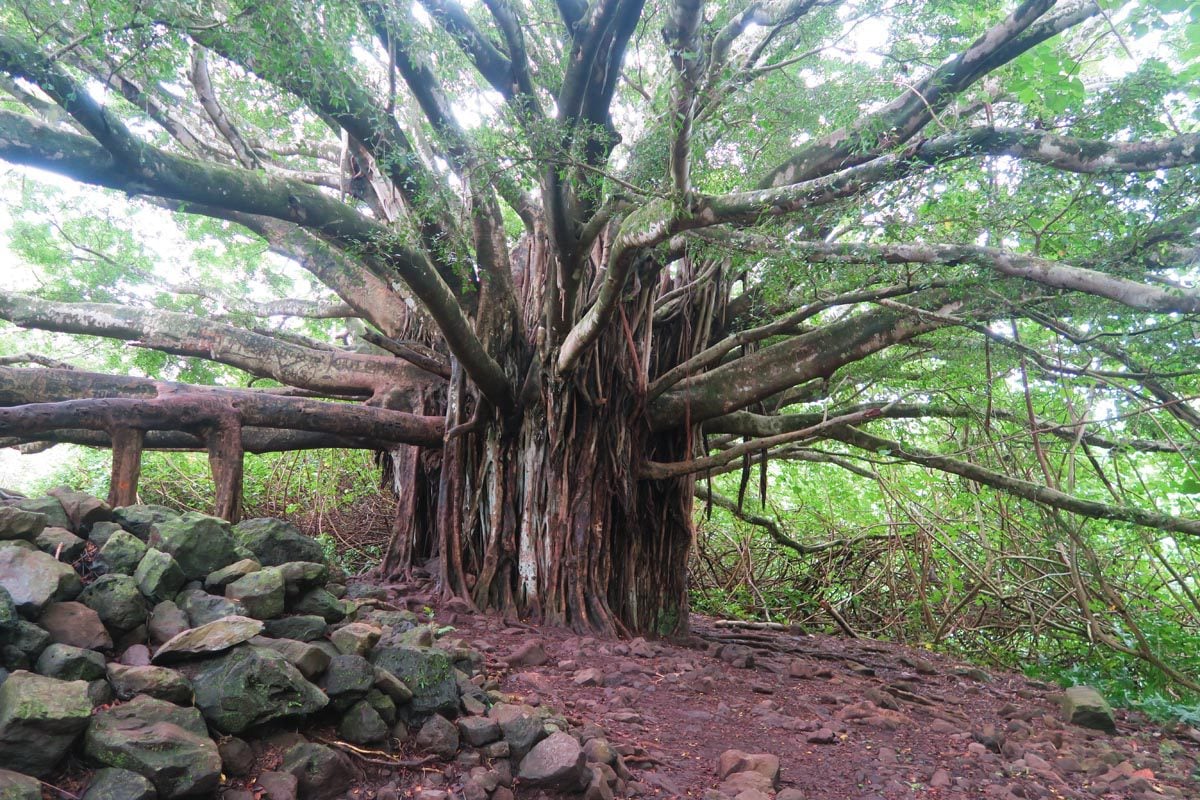
Suddenly, the mango and guava trees of the rainforest give way to giant bamboo. They seem to purposely trap you on the raised, narrow wooden boardwalk, asynchronously producing a cracking sound as they sway in the gentle wind. Visibility into the interior of the bamboo forest is impossible, not the kind of forest you want to get lost in. Their density is extreme, and their uniform structure and color play tricks on the eyes. It’s a bizarre scene, further amplified when you have the trail all to yourself.
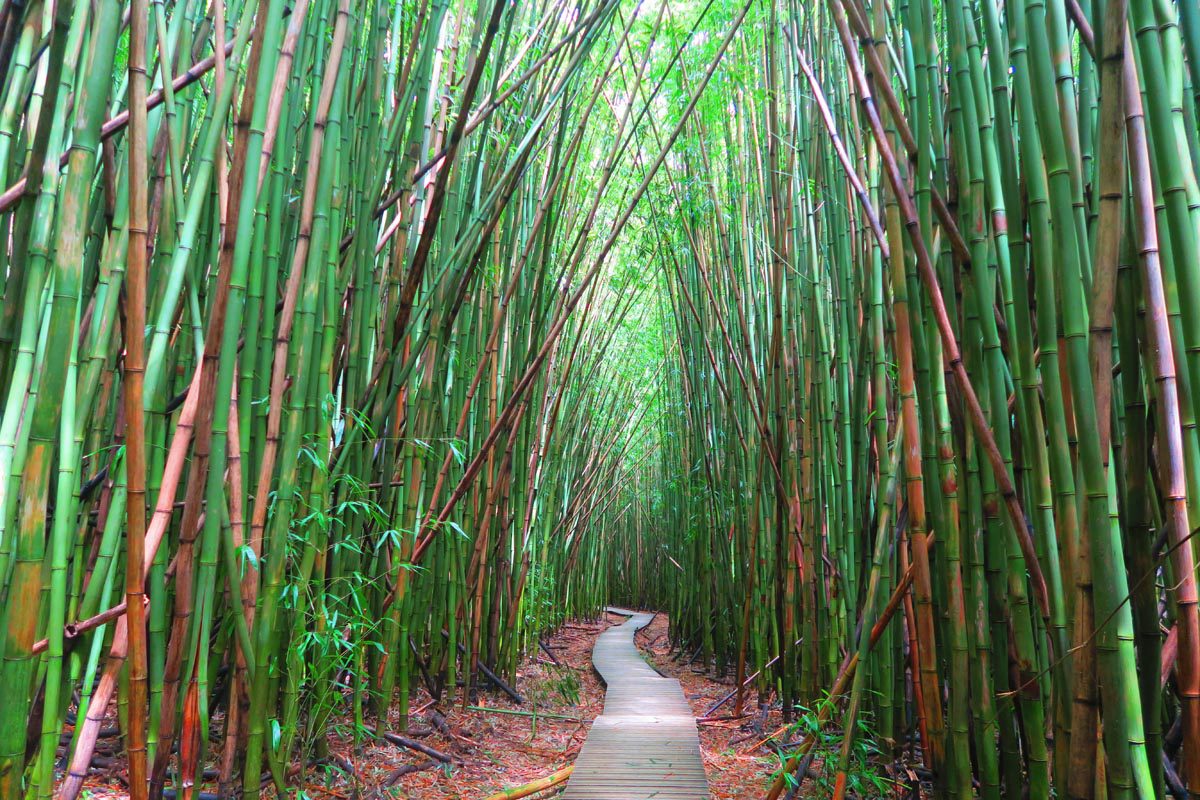
Once you clear the bamboo forest, you reach the 400-foot (120m), Waimoku Falls. The water cascades with immense force and slowly erodes the surrounding cliffs. Swimming is prohibited for many reasons, one of which is falling rocks.
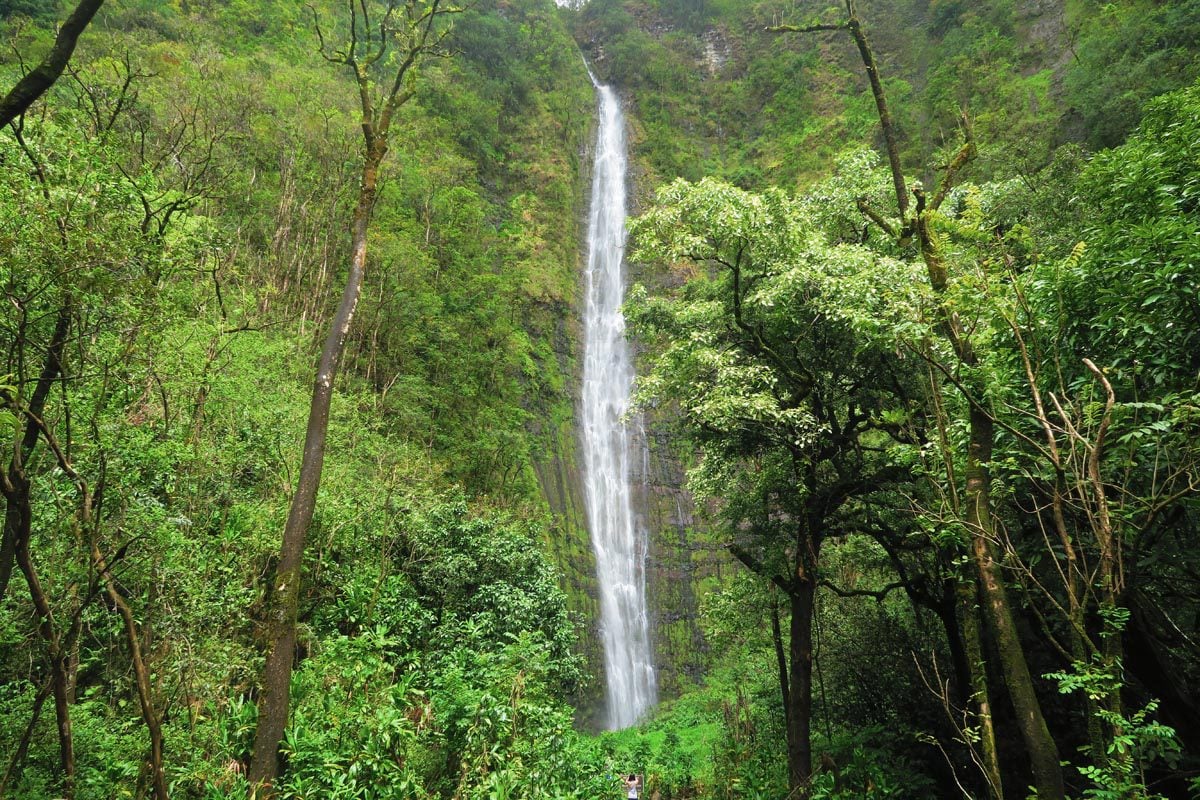
Pipiwai Trail logistics
The return hike takes about 1.5-2 hours, including all stops. Be prepared for one stream crossing, which you can probably skip over if it hasn’t been raining too heavily recently. Bring mosquito repellent, drinking water, and a complete change of clothes.
Oheo Gulch
The drive from the national park to Wailua Falls passes through a rugged area known as the Oheo Gulch. This short stretch of road is the most slow-going and perhaps scenic section of the Hana Highway. Be prepared for a pothole-filled one-lane road where 10mph seems like a stretch. However, there are also waterfalls and streams galore, and everything seems to be just a little extra green.
Wailua Falls
Around mile marker 45, you’ll see signs (and parked cars/tour vans) for Wailua Falls. Due to the proximity of the falls to the scenic road, Wailua Falls is a very popular stop, and if you won’t be going for a dip, it’s also a quick one.
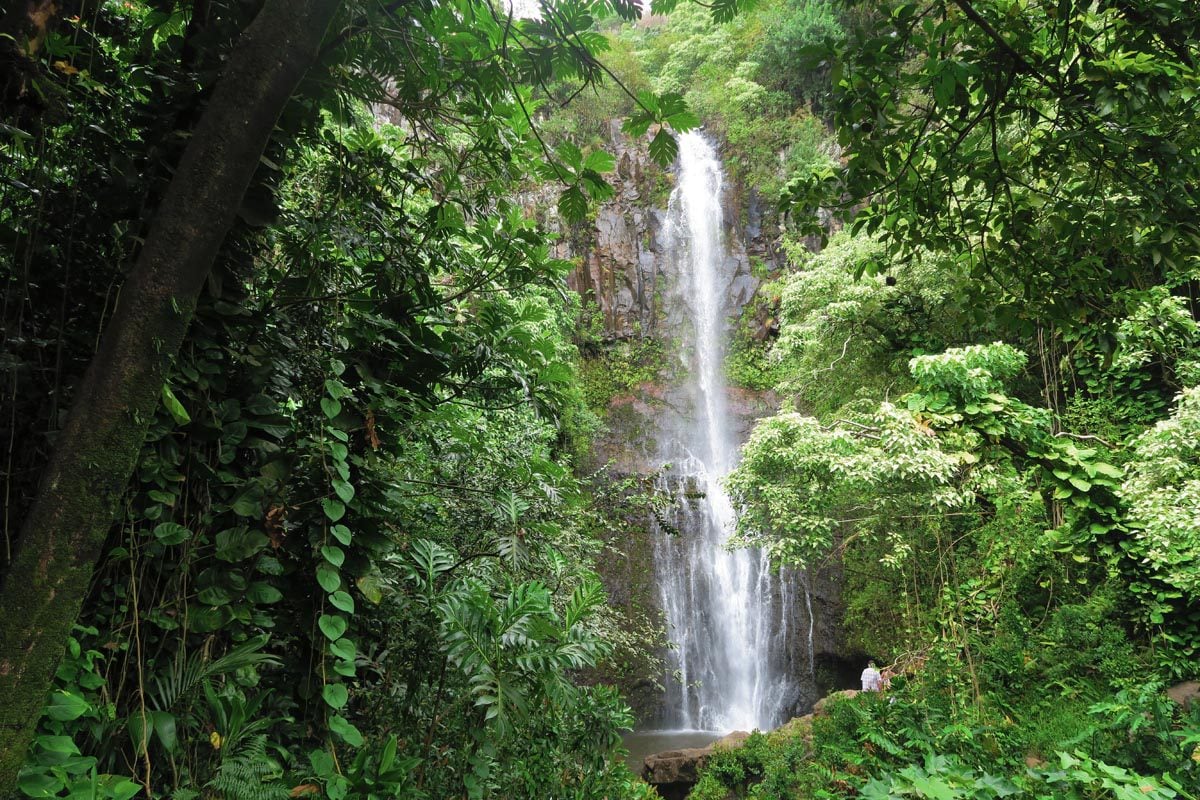
Hamoa Beach
Locals love Hamoa Beach for its clear waters, dark creamy sand, and optimal bodyboarding conditions when the surf is up. It was hard for me to gauge the beauty of this beach on a cloudy day, but it’s a good pit stop if you can find a parking spot (a challenging task).
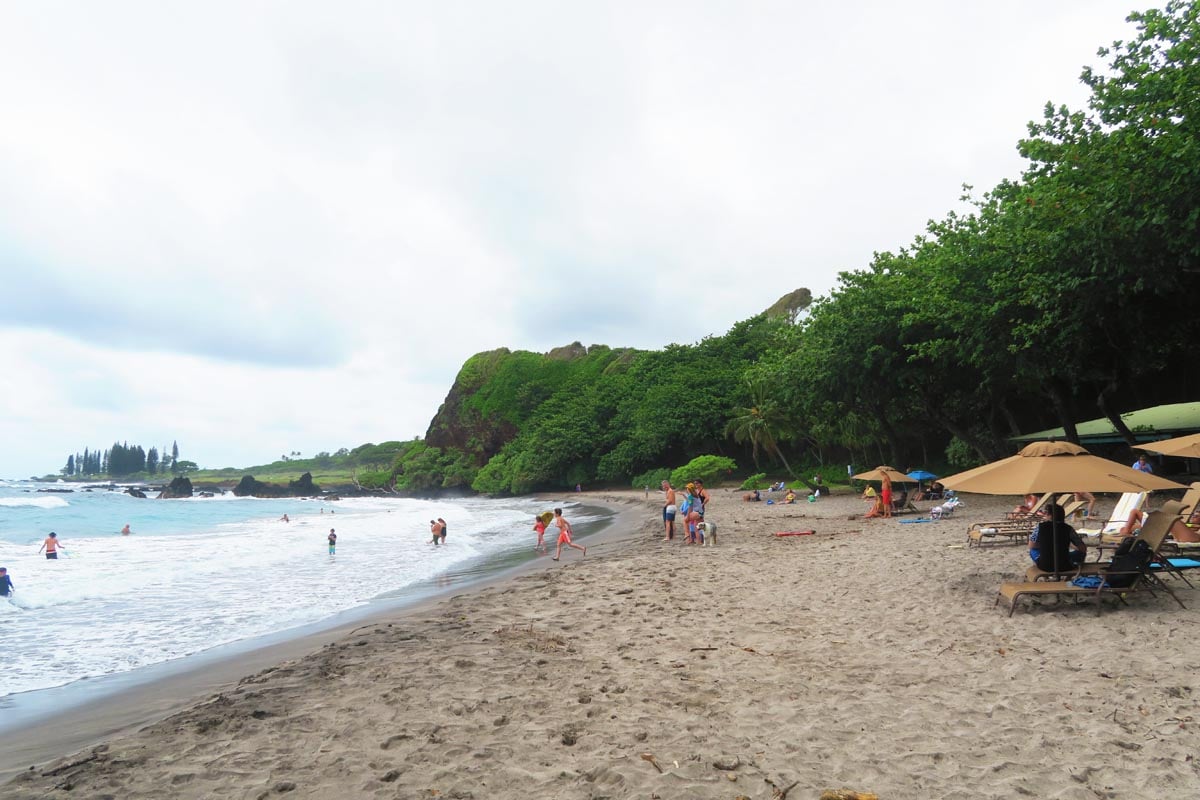
Hana
Though it’s called the “scenic road to Hana”, there’s nothing special about the town itself. Sure, there is a historic church and organic fruit snack stands galore, but what is impressive in Hana is the laid-back way of life. Gardens are perfectly manicured, children are playing in the tropical setting without a care in the world, and time doesn’t seem to have much meaning here.
Red Sand Beach
Kaihalulu Beach – a.k.a “red sand beach” is one of Hawaii’s best beaches and one of the must-see natural attractions on the scenic drive. Park your car near the Hana High School and follow the slippery path that hugs the cliff. The trail to the Red Sand Beach is on private property, so be sure to ask locals if it’s OK to head to the beach. The path is quite eroded, and certain parts are dangerous, but you’ll see both millennials and seniors handling themselves just fine.
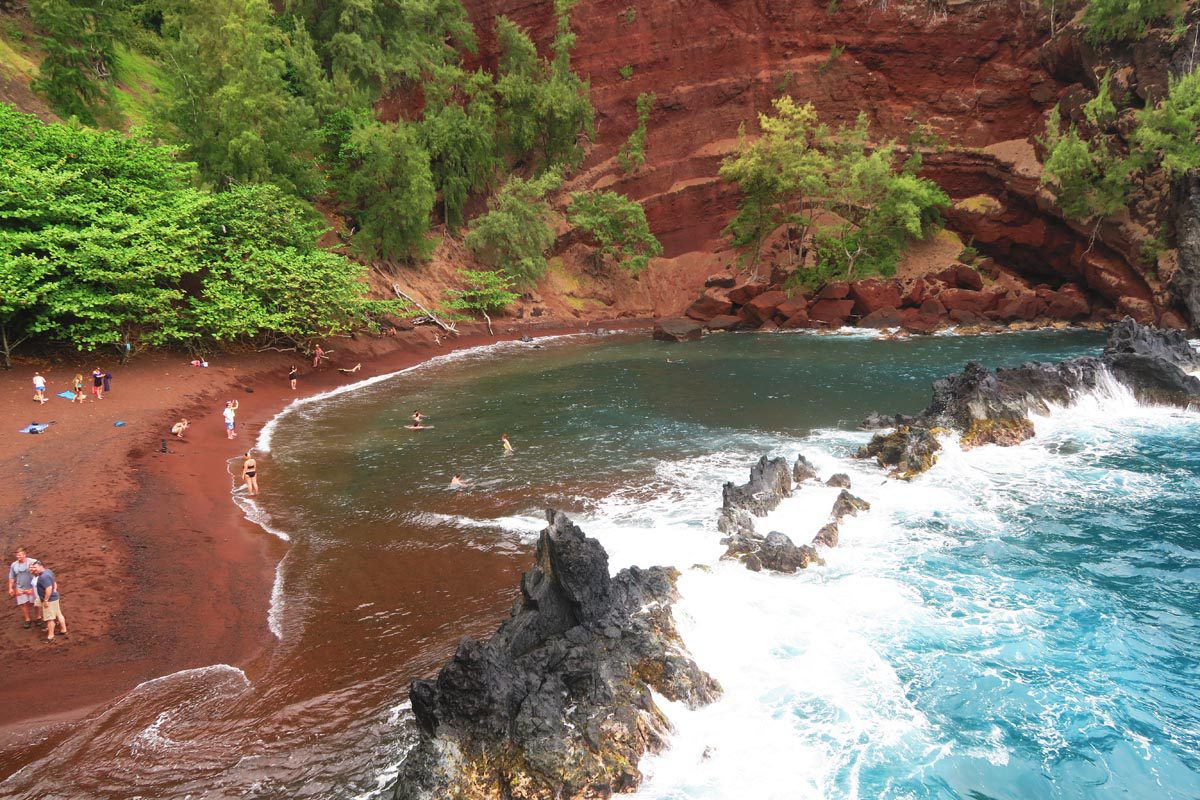
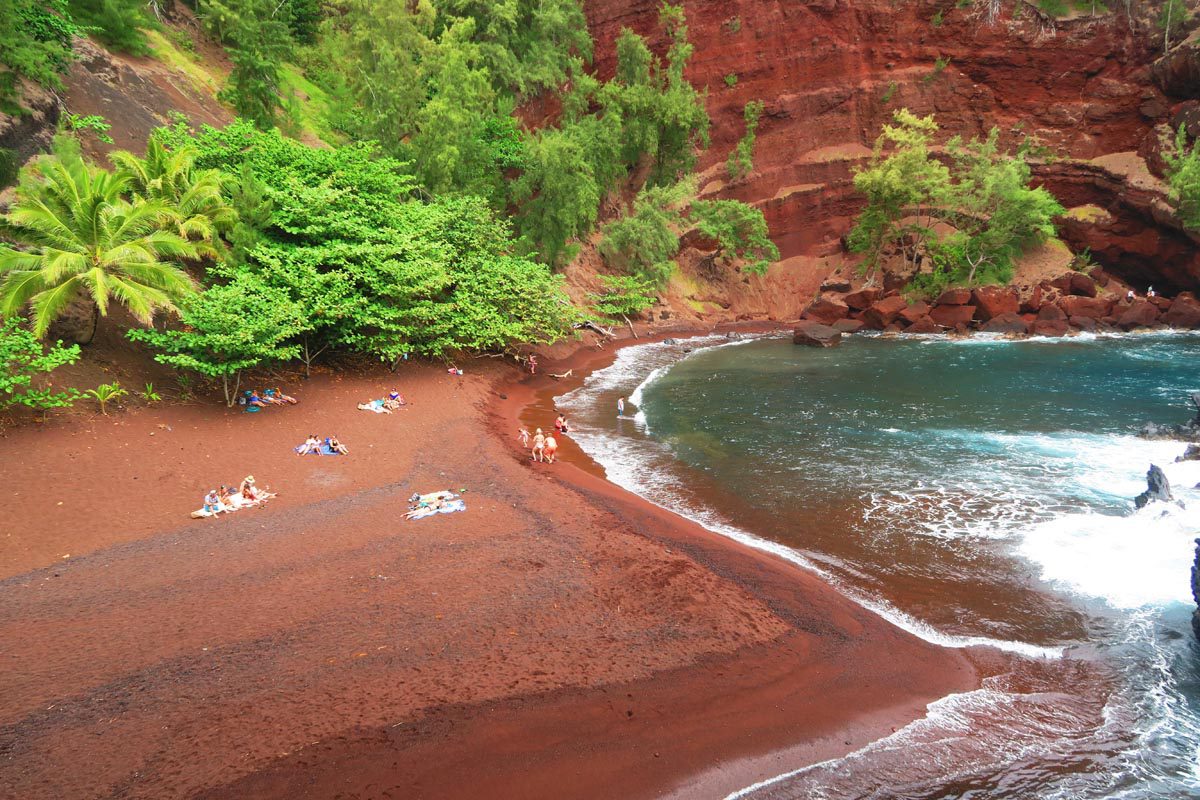
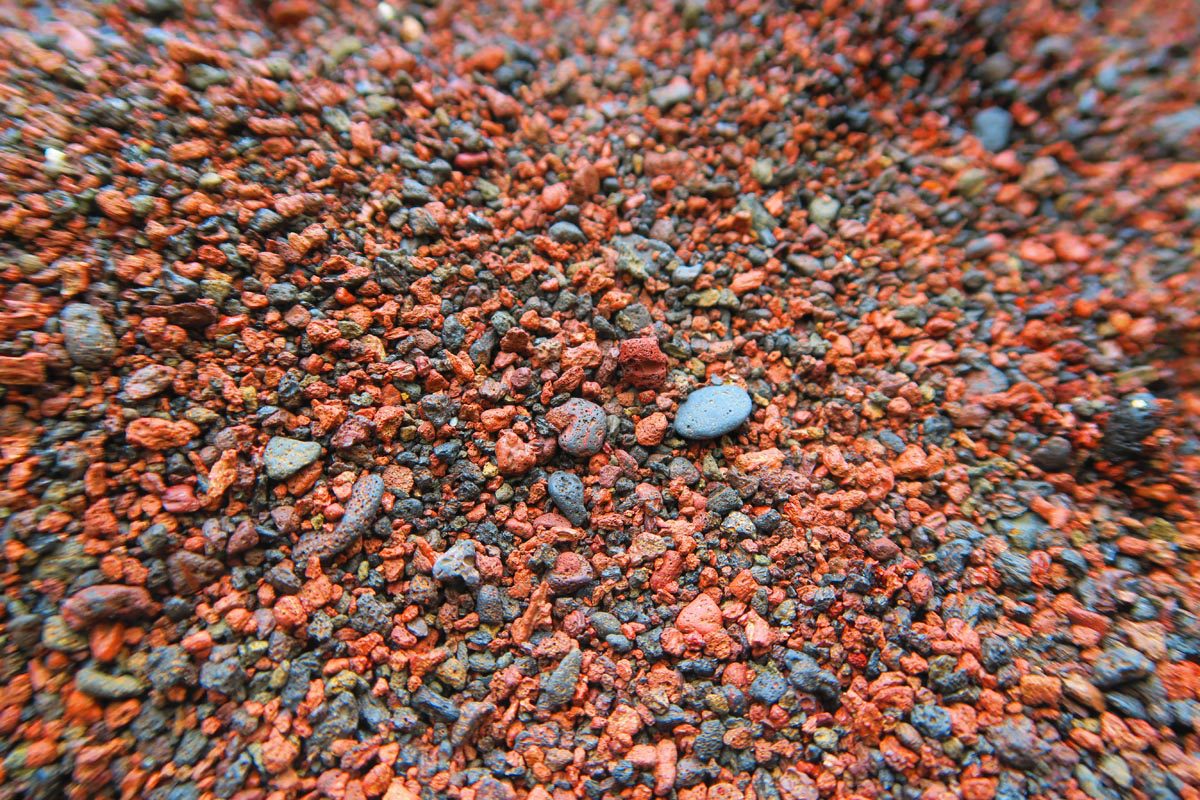
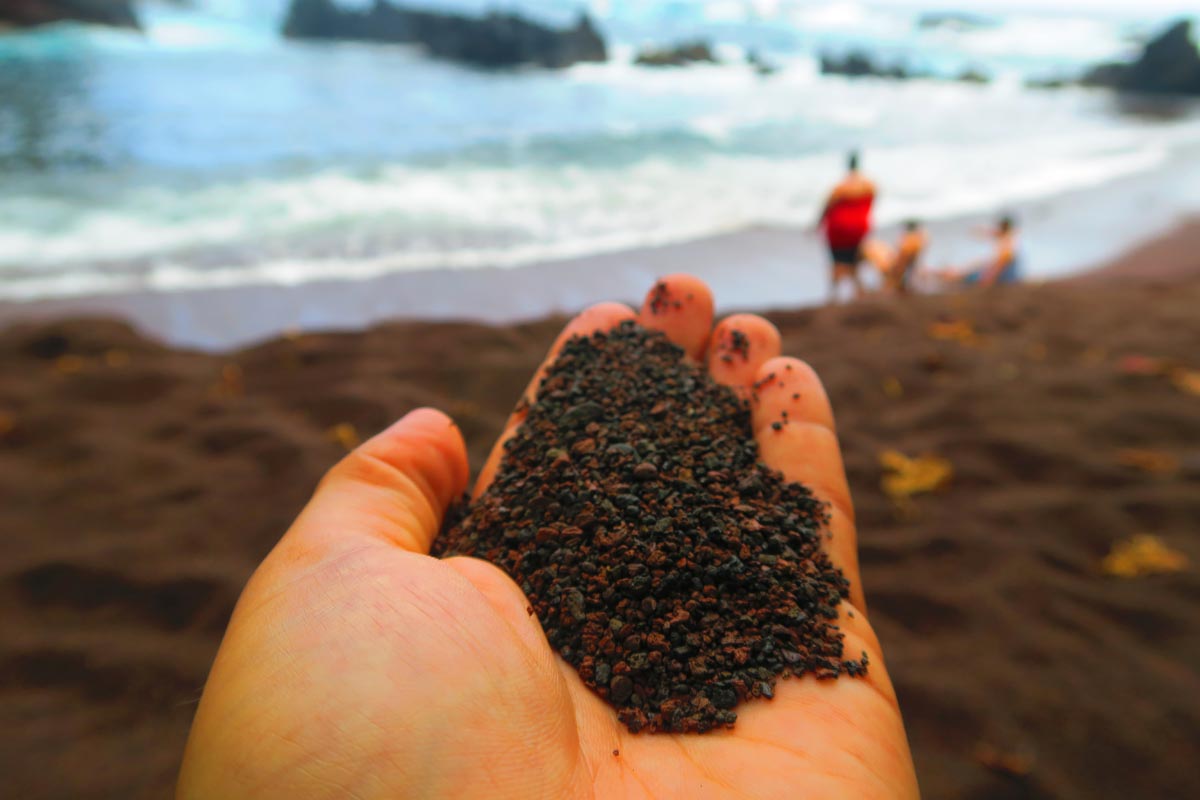
Waianapanapa State Park
If you haven’t already had a picnic lunch, this is the place to do so. In Waianapanapa State Park, you’ll find not only picnic grounds but also beautiful coastal trails, ancient Hawaiian sites, and one of the most famous black sand beaches in Maui – Pa’iloa Beach. You need to book your park entrance in advance.
There are a few lava tubes within park grounds as well, but they were closed when I visited. You can also camp here with a permit, either by pitching your own tent or renting one of the cabins. This could be a good budget option if you want to spend more than a day on the scenic drive, but you’ll need to book in advance and have proper camping equipment since sleeping in your car is a no-no.
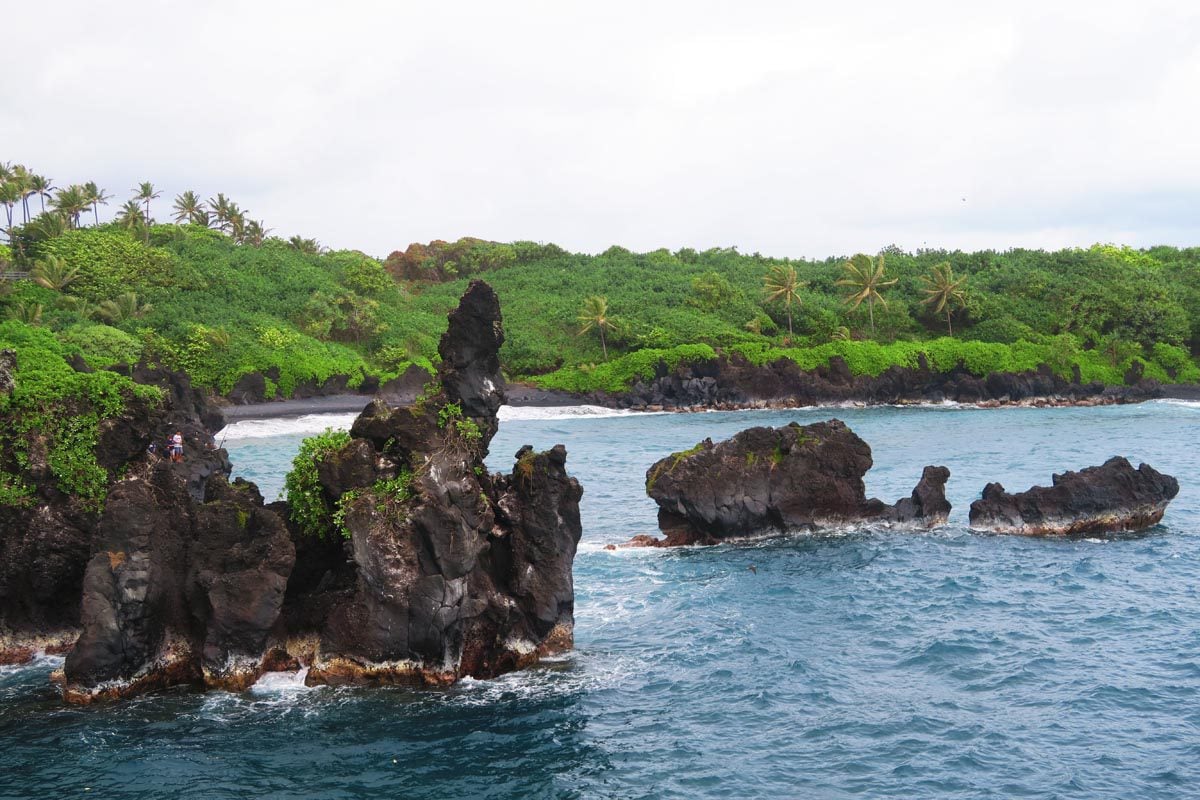
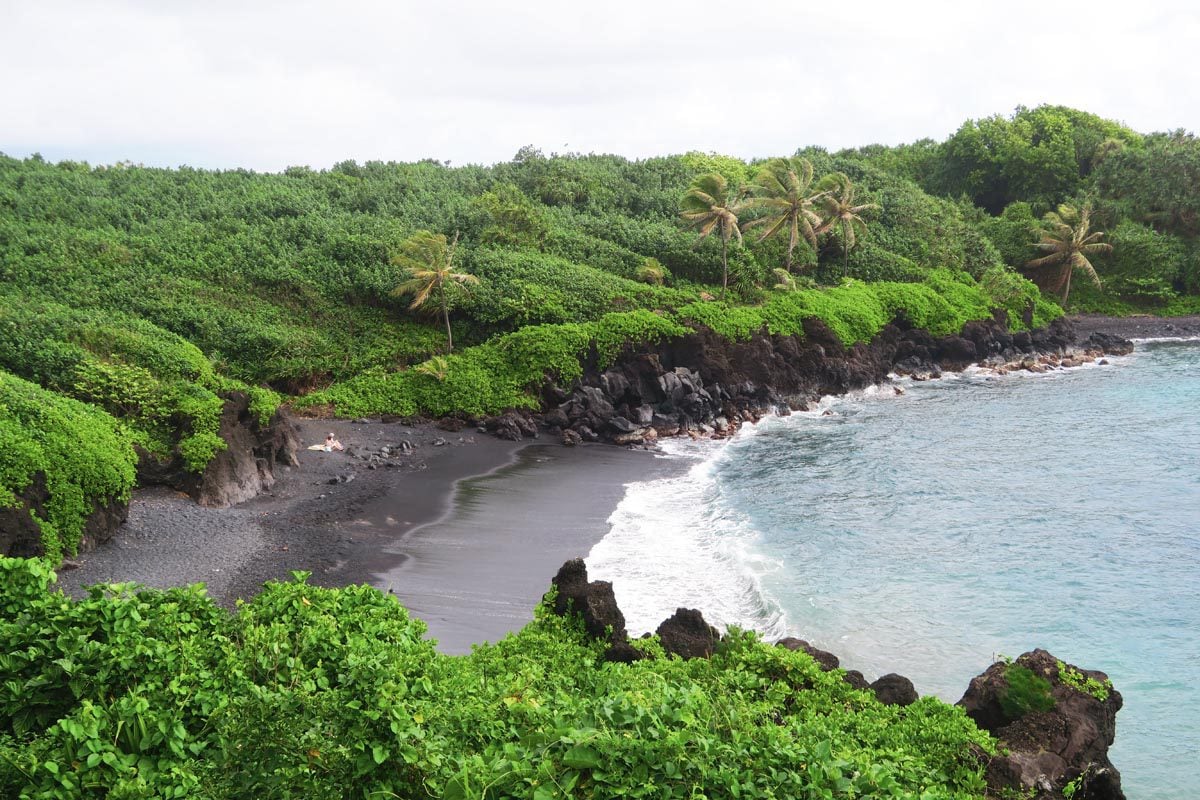
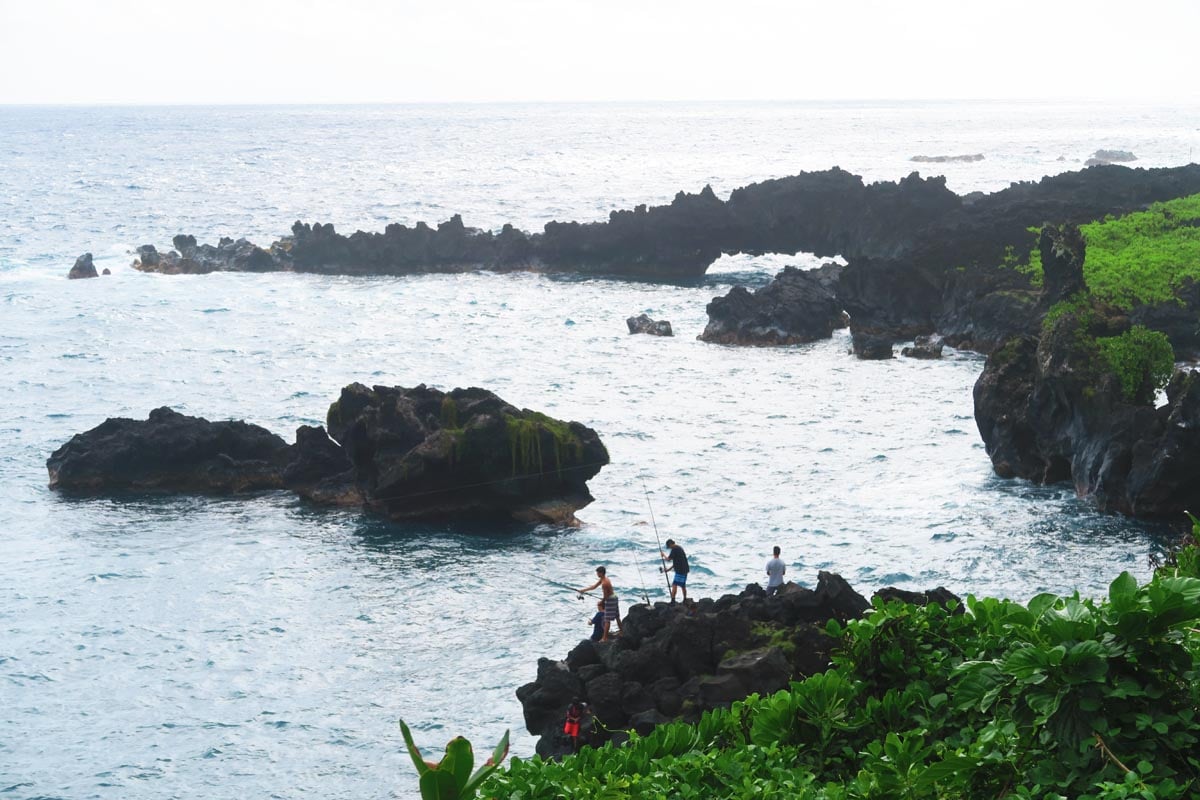
Makapipi Falls
Around mile marker 25, pull over just before or after the one-lane bridge and inspect Makapipi Falls from above as the lovely waterfall plunges beneath your feet en route to the nearby Pacific Ocean. Surprisingly, this quick stop was one of my favorites on the scenic drive and offered a lovely photo opportunity.
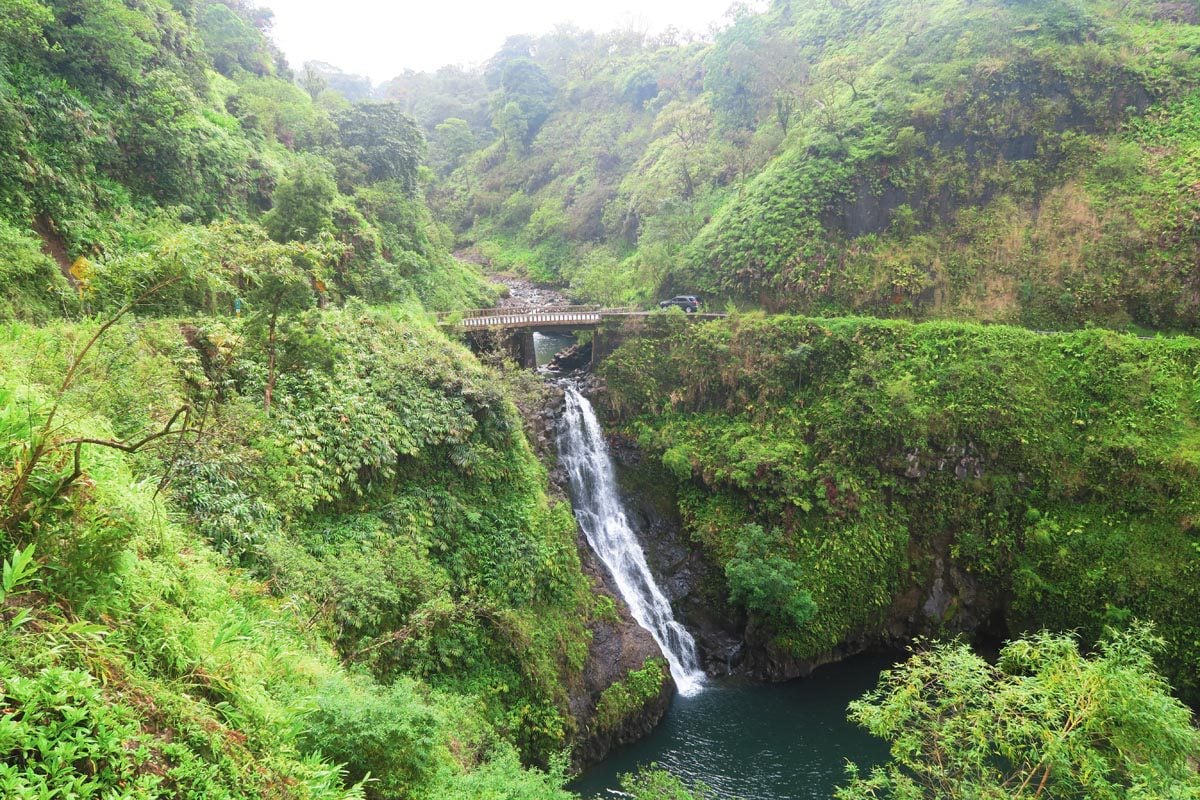
Pua’a Ka’a Falls
Located at the Pua’a Ka’a State Wayside Park at mile marker 22, walk for five minutes and reach a swimming pool fed directly by a waterfall. It’s safe for children to swim here, so it is a popular stop for families (some of whom also take advantage of the shaded picnic area). There is technically an additional pool further upstream, but access was restricted when I visited.
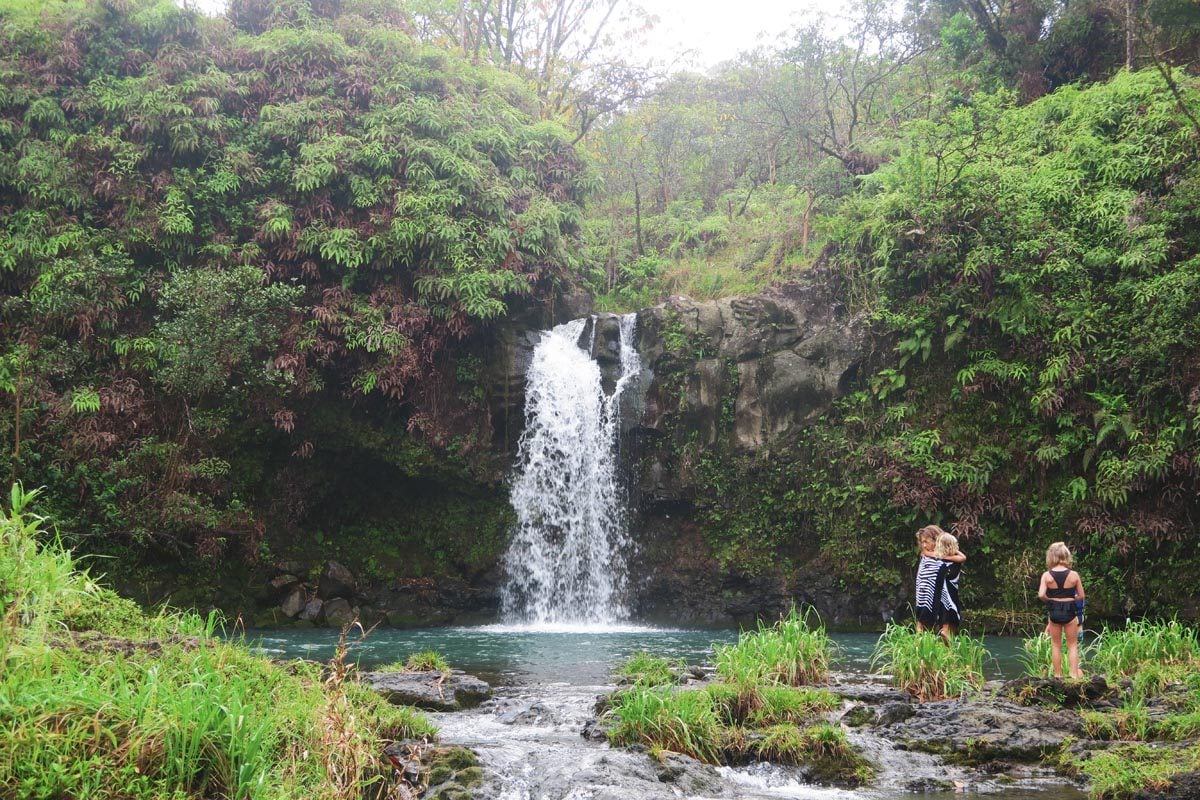
Three Bears Falls
Called Upper Waikani Falls in Google Maps, Three Bears Falls are worth the stop, though you might have to walk a bit as parking is prohibited directly in front of the falls. You can clearly see how these falls got their name, cascading in perfect sync to a dreamy pool, which you can actually swim in by hiking down the gulch for about 10-15 minutes.
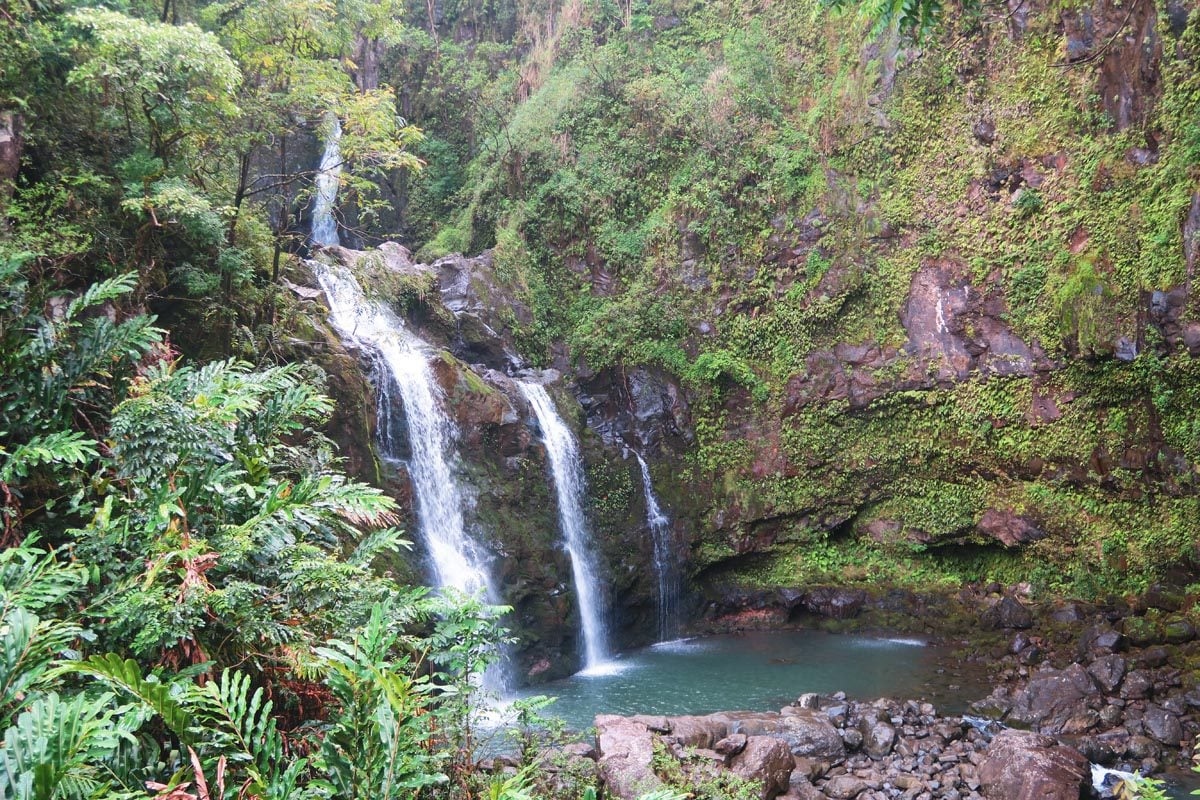
Wailua Valley State Wayside
A quick stop with proper parking that comes at just the right moment when you need a good stretch. Climb to the viewing area for great views south to a gap in the Haleakala Crater and north to the Wailua and Ke’anae Peninsulas.
Ke’anae Peninsula
If your eyes need a bit of a break from the waterfalls, take a right on the rough downhill road for a quick visit to the Ke’anae Peninsula. Reminiscent in its flat appearance to the Kalaupapa Peninsula of Molokai, Ke’anae has a tranquil village where nothing really happens, a scenic rugged beach, and a picturesque church whose exterior is far more impressive than its interior.
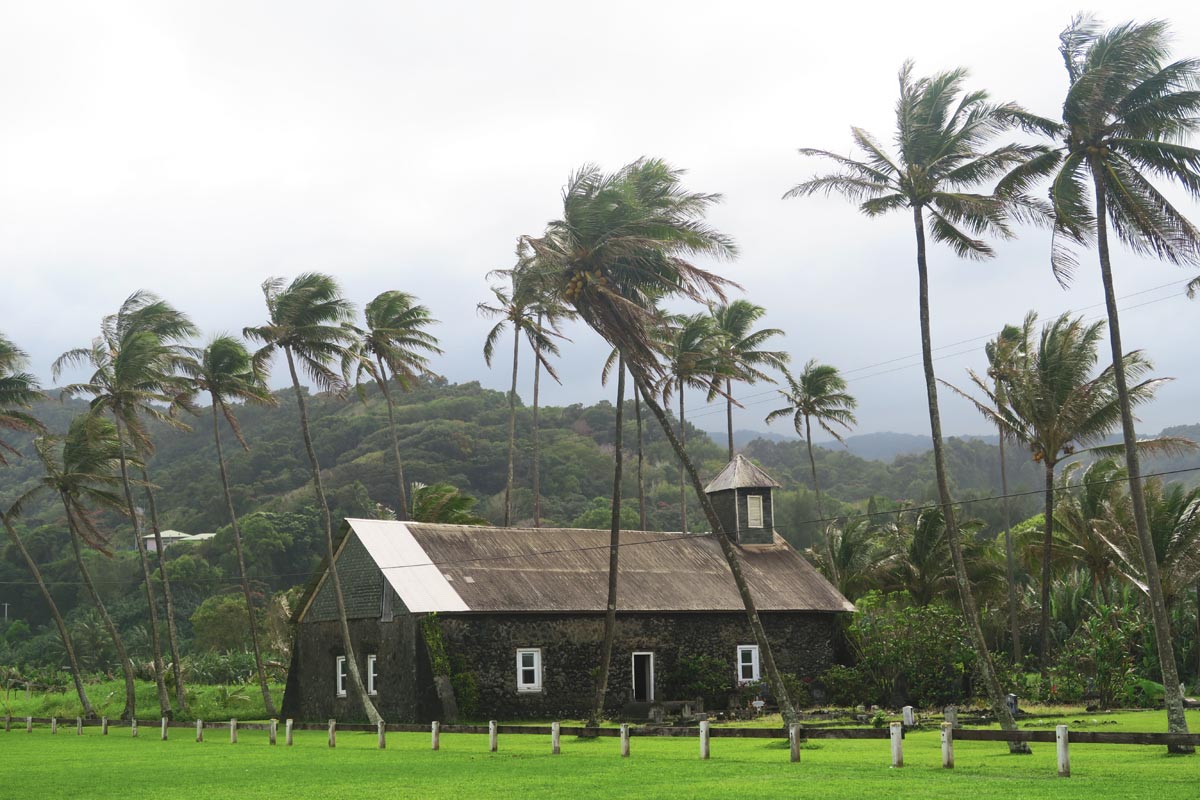
Honomanu Bay
A scenic stop at mile marker 13 overlooks the emerald Honomanu Bay. You might be able to spot its secluded black sand beach, but getting down there is more complicated than it looks. I found the trailhead, but it was overgrown with vegetation and split by other trails, making it feel like an unnecessary maze.
The stretch of road between Honomanu Bay and Haipuaena Falls (see below) is stunning, so take it slow and pull over (where you can) to enjoy the views.
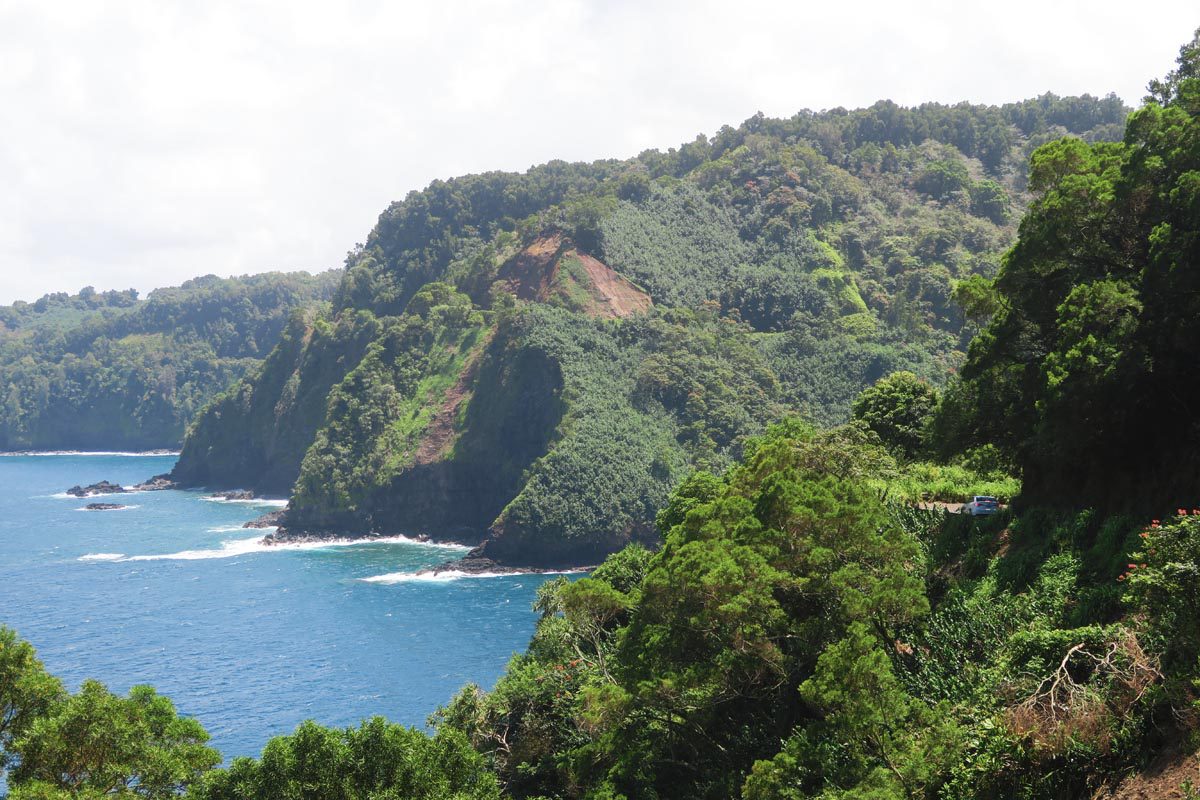
Kaumahina State Wayside
The Kaumahina State Wayside is another “proper” pitstop where you’ll find restrooms and picnic tables. However, the added value here is the fabulous scenery of oncoming traffic with the backdrop of Honomanu Bay and its surrounding cliffs.

Waikamoi Nature Trail
The Waikamoi Nature Trail is a very rewarding 0.5-mile trail (each way) that leads to a secluded picnic area via a thick forest of bamboo, mango trees, and giant eucalyptus that are all simply massive and who knows how many centuries old. As you can see in the photo below, the roots are the dominant feature on this trail.
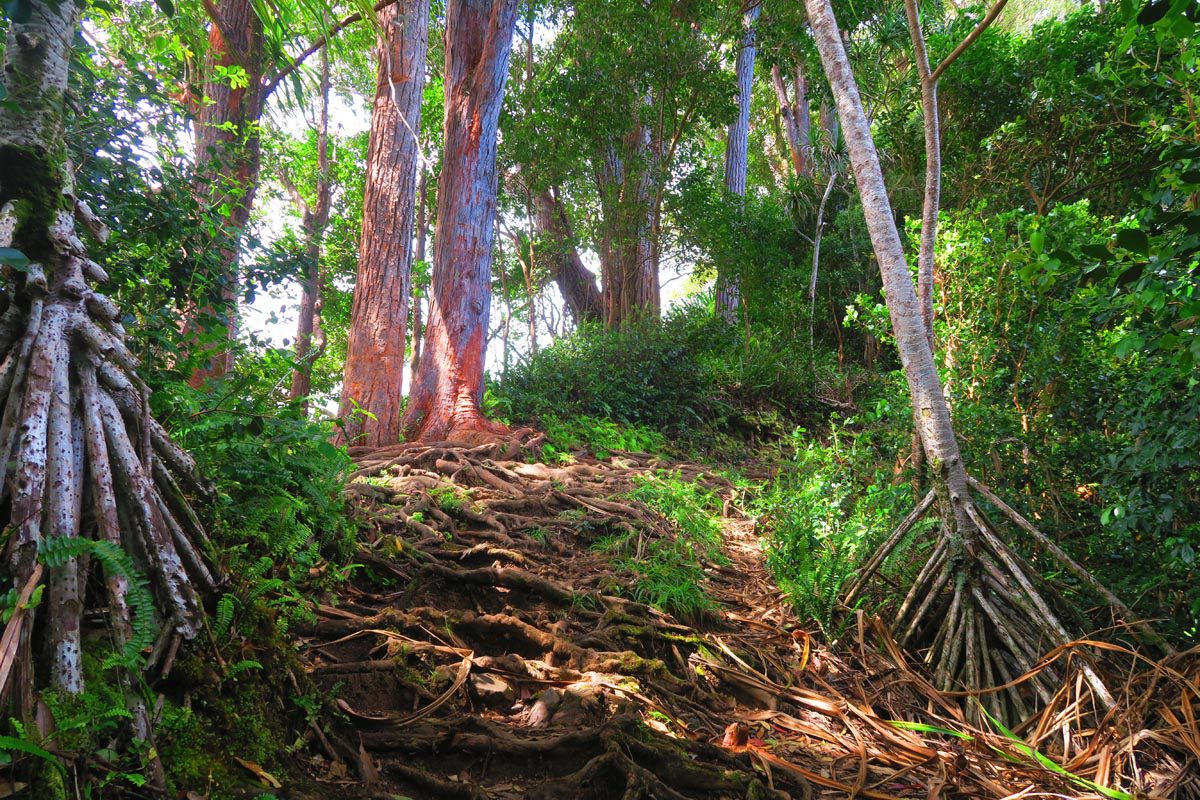
Haipuaena Falls
This “secret pool” is no longer a secret, but it might be worth going for a dip if you’re traveling with children or if it’s a rare slow day on the Hana Highway. There are very few parking spots at the trailhead to the falls (around mile marker 11), but you might be able to park before or after and just walk a bit.
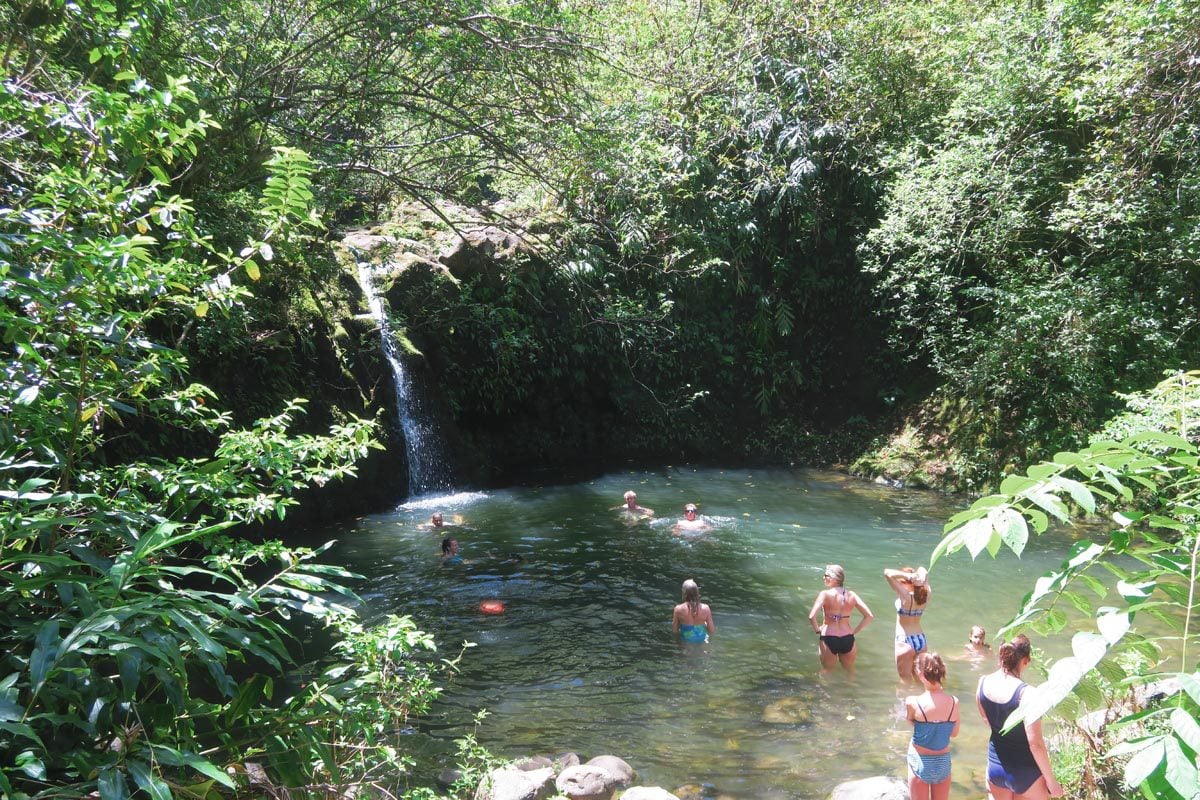
Twin Falls
When driving the scenic road to Hana the popular way (west to east), Twin Falls is the first real stop, so it gets a lot of visitors. There are two parking lots, a main and an overfill further down the road. Be very careful in general and avoid the overfill lot, as car break-ins are especially popular at Twin Falls (see “Maui driving tips” for more details).
At the gated entrance to the falls (free), you’ll encounter a cool food truck and, later on, portable toilets. You can then detour to the lower swimming hole or continue to the more popular upper pool (be careful walking on the slippery roots). Both swimming pools are quite inviting, but there are many others around to “share” the Eden-like scenery with you. Don’t forget to pay close attention to the polygon rocks on the side of the upper pool.
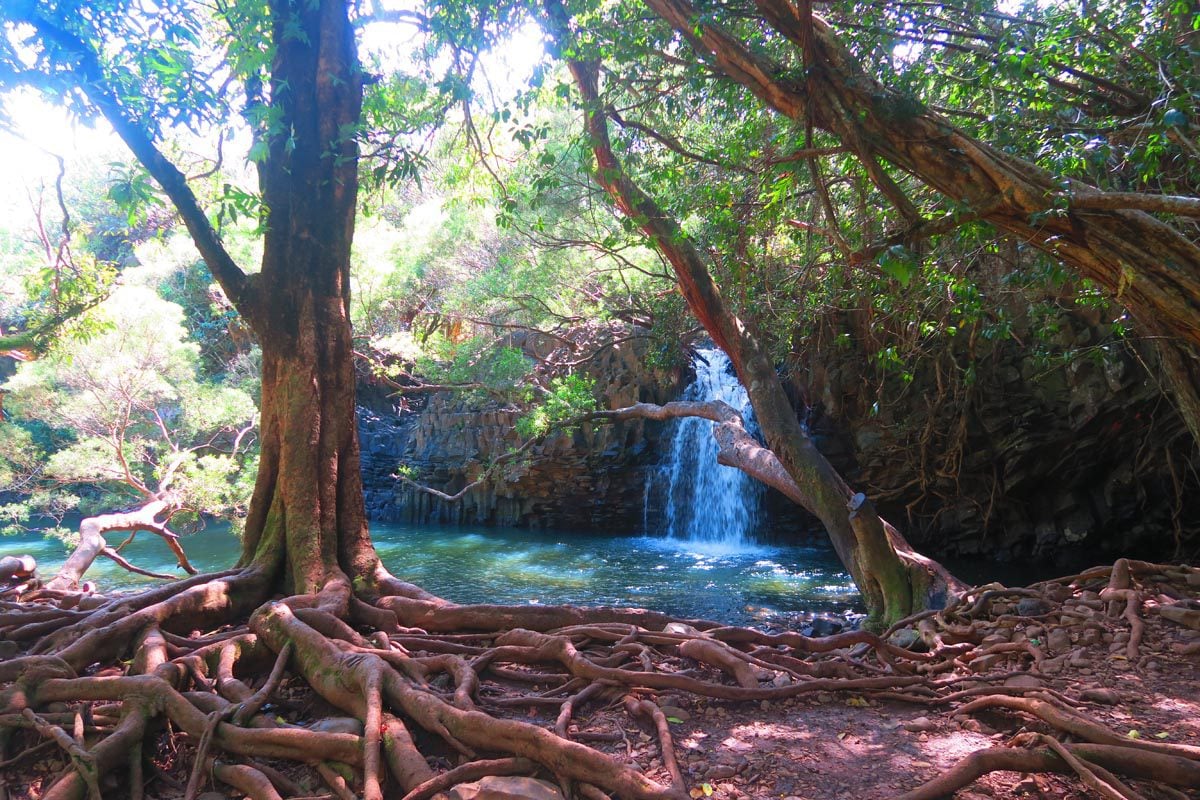
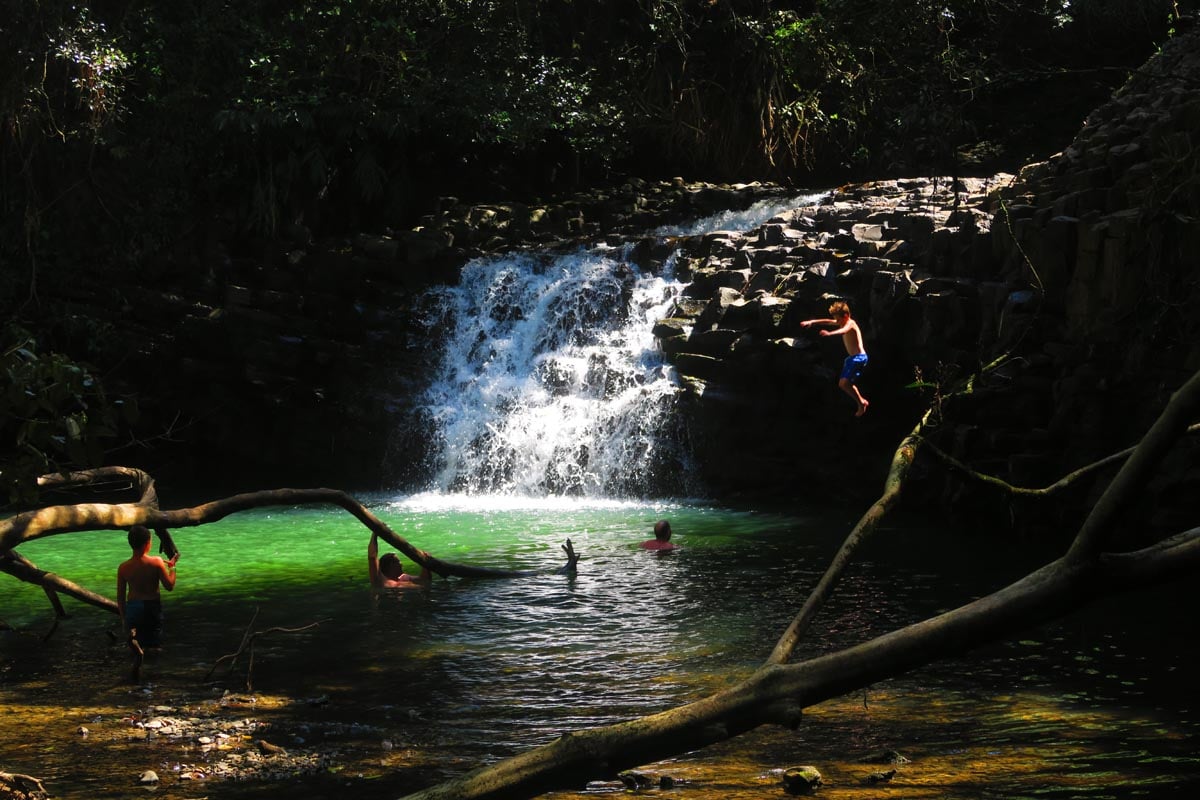
Got More Time?
If you still have time on this busy day, stop at Hookipa Lookout and its beach to watch the surfers and meet the sea turtles (see day three’s itinerary for details). In any case, you’ll likely be hungry after a long day, so I recommend pausing in old-sugar-town-turned-hipster-central Paia for dinner. The Paia Fish Market is definitely the top choice.
